19 wonderful gardens to visit in South East England (with a map)
England is renowned as one of the world's best destinations for gardens, and its lush landscapes offer a perfect canvas for some of the most picturesque gardens in the world. Thanks to its moderate climate, South East England boasts an abundance of beautiful gardens that flourish throughout the year.
From vibrant spring blooms to lush summer landscapes and even stunning winter displays, the region is a haven for garden enthusiasts, and many of these gardens can be reached as day trips from London.
This post is a guide to some of the best gardens to visit in South East England, and includes a map at the end of the post to help guide your garden visits. The gardens are organised by county.
Nymans
West Sussex | RH17 6EB
Nymans is a unique estate in the picturesque countryside of West Sussex, England. This captivating property, now managed by the National Trust, boasts a delightful combination of formal gardens, woodlands, and enchanting ruins.
Originally acquired by the Messel family in the late 19th century, it was the artistic touch of Ludwig Messel and his son Leonard that cultivated the gardens' unique character. Subsequent generations of the Messel family further enhanced the estate, infusing it with a sense of artistic grace.
The garden is varied in its features, from the sunken garden featuring an Italian loggia to the charming spring walk lined with crocus and daffodils. There is a Japanese garden with a serene design and a wisteria tunnel. The meticulously manicured summer borders, adorned with a kaleidoscope of vibrant blooms, is a particularly special moment.
Among the garden's most intriguing elements are the hauntingly beautiful ruins of the house, which was ravaged by a catastrophic fire in the mid-20th century. These remains offer a glimpse into the past, serving as a poignant reminder of the estate's history and resilience.
While each season has its own allure, summer unveils Nymans in its full splendor. As the sun sets, the gardens take on a magical quality, with twilight casting a soft glow over the landscape. To enhance the visitor experience, Nymans thoughtfully extends its opening hours into the late evening during the summer months. There are often late jazz nights in July, making it possible to appreciate the golden hour in the garden. It’s a perfect summer day trip from London.
I am partial to Nymans because I was married there in the Italian loggia, and the garden was a perfectly magical backdrop to that day.
Arundel Castle
West Sussex | BN18 9AB
Arundel Castle, located in West Sussex, England, is a well-preserved medieval castle ensconced within an expanse of gardens and parklands, offering a vivid tapestry of horticultural beauty and historic interest.
The fascinating history of Arundel Castle parallels the allure of its architectural splendor. Founded in 1067 by Roger de Montgomery, a trusted confidant of William the Conqueror, the castle's roots are deeply entwined with England's medieval past. Across the passing centuries, Arundel Castle has served as the noble seat for the Dukes of Norfolk and their ancestors, bearing witness to generations of aristocratic lineage.
The gardens and grounds of this storied estate have undergone a metamorphosis shaped by the visionary ideas of numerous architects and designers, each leaving an indelible mark on the landscape, creating a truly unique and ever-evolving masterpiece.
Arundel Castle gardens abound with distinct features that draw the eye and spark the imagination. A tranquil white garden bathes visitors in an ethereal tranquillity, while the chapel offers a space for quiet reflection. The ancient moat contributes to the castle's historic charm, and a whimsical tulip maze offers a delightful surprise at every turn.
Springtime at Arundel Castle is particularly enchanting. A dramatic unveiling of colours occurs as the tulip gardens burst into bloom. With over 60,000 tulips on display, the estate is transformed into a stunning tableau of vibrant hues. Arundel Castle is the best tulip garden in the UK and should not be missed at that time of year.
Hampton Court
Surrey | KT8 9AU
Located on the banks of the River Thames, Hampton Court Palace presents a captivating blend of history, opulence, and breathtaking natural beauty. This magnificent property is a major tourist destination for its rich history, but also deserves recognition simply for its outstanding gardens.
The story of Hampton Court unfolds across centuries, its ownership passing through the hands of notable figures in British history. Originally built for Cardinal Wolsey in the early 16th century, it was later seized by King Henry VIII, who expanded and embellished the palace. The renowned architect Sir Christopher Wren further enhanced the grandeur of Hampton Court with his elegant designs, contributing to its iconic appearance.
The gardens of Hampton Court are a sight to behold, masterpieces in their own right. The formal garden, exquisitely arranged with geometric precision, presents a harmonious blend of symmetrical flowerbeds and immaculately manicured lawns. The sunken garden, a hidden gem within the estate, captivates visitors with its tranquil beauty, boasting vibrant floral displays that bloom in brilliant colors.
While Hampton Court's gardens offer allure in every season, spring is a particularly delightful time to visit. As the season unfolds, the tulip gardens burst into a vibrant display of colors, with an astounding number of tulips on full exhibition.
As autumn embraces the estate, a new chapter of beauty unfolds. The changing foliage paints the gardens in warm hues. The dahlia borders come to life, showcasing an array of vibrant blooms that add a touch of late-season splendour to the landscape.
No matter the season, visiting the gardens at Hampton Court is an excellent thing to do in South West London.
Guildford Castle
Surrey | GU1 3SX
Guildford Castle Gardens is a small but intruiging feature of the market town Guildford. Completely free to enter as a city park, Guildford Castle Gardens features a beautiful arrangement of flower beds against the ruins of the castle.
Originally built in the 11th century by William the Conqueror, the castle served as a formidable stronghold. The ruin of the Norman castle was opened as a public park during Queen Victoria’s reign.
The garden's most striking feature is the exquisite flower beds that encircle the castle ruins. Meticulously arranged with a variety of seasonal blooms, these flower beds create a charming frame for the ancient stones, providing a harmonious blend of nature and history. The elegant curves make it a unique public garden.
Spring is the best time to visit Guildford Castle Gardens while the garden is alight with thousands of tulip blooms. This creates a stunning scene against the castle and is a special place to stop by while in Guildford. It’s one of the best places to see tulips in South East England.
Dunsborough Park
Surrey | GU23 6AL
A hidden gem in Surrey, Dunsborough Park is a captivating estate of beautiful gardens that opens to visitors twice a year through the National Garden Scheme.
The garden has many beautiful features and distinct areas. A picturesque pond graced with an ornamental bridge exudes tranquility, reflecting the serene surroundings.
The garden's formal flower beds showcase a symphony of colors, meticulously arranged in perfect harmony. Expansive stretches of lush lawn invite leisurely strolls, while a captivating tulip meadow delights the senses with its vivid floral display.
Spring is an enchanting season to explore Dunsborough Park. Thousands of tulips bloom in breathtaking arrays. The tulip meadow frames the ornamental bridge in the background, creating a unique and picturesque scene. The formal planting of tulips in geometric arrangements creates a stunning view.
In autumn, Dunsborough Park showcases its abundant display of dahlias, boasting one of the largest dahlia displays I’ve seen in South East England. The vast variety of dahlias arranged by colour creates a beautiful atmosphere.
Dunsborough Park is only open at select times to the public in April and September. Although small, don’t miss it’s wonderful garden design.
Polesden Lacey
Surrey | RH5 6BD
Polesden Lacey is a charming National Trust property in Surrey with a rich history as an entertainment estate during the early 20th century. It’s beautiful gardens make it one of the best places to see roses in South East England.
Polesden Lacey has a storied history, having been the cherished country retreat of several notable owners. Originally dating back to the late 18th century, it later became the residence of celebrated socialite and society hostess, Mrs. Margaret Greville. The house contains a wonderful collection of painting and decorative arts collected by Greville and past owners of the estate.
The enchanting rose garden at Polesden Lacey, abounding with fragrant blooms, casts a spell of romance and serenity. A peony walk adds its own touch of opulence. Formal borders, artfully arranged, contribute to the garden's regal charm, while lavender beds release their soothing fragrance.
Another treasure awaiting visitors is the kitchen garden, where an abundance of fresh produce and herbs flourish. A small cottage on site creates a bucolic scene of the English countryside.
June is the time to visit Polesden Lacey. The rose garden blossoms into a breathtaking spectacle during the rose season. Climbing roses entwine gracefully with rose bushes, creating a mesmerising display of colours and scents. It is a truly romantic rose garden.
Ham House
Greater London | TW10 7RS
Ham House in Richmond, London is a wonderful Stuart era property with an enchanting garden.
Ham House's history weaves a tale of aristocracy and artistic vision. Constructed in the early 17th century, the brick facade was a classic example of Stuart architecture and intriguing history is a backdrop to the property, as it has ties to the English Civil War.
While fascinating from a historical perspective, the gardens at Ham House boast an array of enchanting features. The walled kitchen garden is one of the most beautiful I’ve seen in England, and is also home to a wisteria-draped cafe which is a great place to stop for refreshment.
In the spring, the expansive lawns behind the house come alive with purple carpets of crocus blooms, followed by delicate wild tulips. The serene silent gardens invite moments of quiet contemplation, inviting visitors to unwind amidst nature's tranquility. The lavender garden, a vision of purple hues and aromatic scents, offers a sensory feast during the summer months. As the seasons shift into autumn, Ham House unveils a spectacle of rich and vibrant colours.
Ham House is wonderful at any time of year, and is a brilliant place to visit in Richmond.
West Green House Garden
Hampshire | RG27 8JB
West Green House Gardens in Hampshire is a wonderful garden to visit, doubly so if you are a fan of opera. Originally established in the early 18th century, the estate saw a series of owners who contributed to its transformation. Since 1993 Marylyn Abbott has taken charge of restoring the beautiful estate.
West Green House Gardens is celebrated for its association with opera. This captivating estate has been the host of enchanting opera performances, which take place in its beautiful gardens. The harmonious blend of music and nature creates an unparalleled cultural experience.
Summer is the time to visit West Green House, with its enchanting garden broken into quadrants and arranged by colour scheme. The summer blooms are brightly coloured, creating an artistic scene.
Mottisfont
Hampshire | SO51 0LP
Tucked away in the winding country roads of Hampshire, Mottisfont is a timeless estate with a phenomenal rose garden.
Originally founded in the 13th century as an Augustinian priory, it evolved through the centuries and was brought to life in the 20th century by Maud Russell. Russell was a renowned patron of the arts, and the house displays a wonderful collection of paintings.
Among the gardens' special features, the rose garden stands as a true horticultural wonder. A feast for the senses, this garden delights visitors with a stunning display of fragrant and colorful roses. The month of June casts a magical spell on Mottisfont, as the roses reach their peak bloom, showcasing historical varieties that evoke a sense of nostalgia and romance. The walled garden, lovingly tended with artistic precision, adds an air of seclusion to the rose garden's ambiance.
Many historic varieties of roses bloom in the walled garden, and the carefully planned colour scheme of pinks, purples, reds and whites create a wonderfully coherent garden design. The rose garden at Mottisfont is (in my opinion) the best rose garden in England. It is wonderfully open late in June to allow more visitors to explore the garden in quiet hours and with soft light.
Hinton Ampner
Hampshire | SO24 0LA
Hinton Ampner is a wonderfully diverse garden and house managed by the National Trust in Hampshire.
The final owner, Ralph Dutton, was a passionate horticulturist and collector, infusing the gardens with his artistic sensibility and creating the captivating landscape that graces the estate today.
The gardens are picturesque and carefully planned. The terraced gardens, meticulously arranged, cascade gracefully down the hillside. This area is particularly beautiful in the summertime when bright pink dahlias create a striking contrast with the topiaries. A serene pond filled with water lilies reflects the beauty of the surroundings, adding to the garden's tranquil ambiance.
The darling kitchen garden grows a vast array of flower and produce and provides beautifully framed views to the chapel. The charming village chapel is nestled within the grounds.
Hinton Ampner is an excellent summer day trip from London.
Cliveden
Buckinghamshire | SL6 0JA
Cliveden is a grand stately home turned luxury hotel in Buckinghamshire. While the building itself is now a stunning hotel (where Megan Markel stayed before the royal wedding) the grounds are managed by the National Trust and the gardens are wonderful. This is a splendid estate surrounded by lush woodlands and picturesque views of the River Thames.
Initially acquired by the 2nd Duke of Buckingham in 1666, it evolved through various owners who left their mark on the estate. The imposing red facade of the house overlooks the parterre, a terraced garden with far-reaching views of the River Thames. Under the supervision of Head Gardener John Fleming, Cliveden gained horticultural fame for its innovative use of bedding and geometric flower displays.
The estate entered a new era when William Waldorf Astor, America's richest man, purchased it in 1893. During the First World War, Cliveden served as a hospital for injured Allied troops, and a memorial garden was later created to honor the fallen. Cliveden became a center for European political and literary life and was known as the 'Cliveden Set.' In the 1960s, the infamous 'Profumo Affair' brought sensational headlines, leading to the Astor family's departure. In 1966, Cliveden was entrusted to the National Trust, opening its doors to the public to enjoy its illustrious history and magnificent gardens.
The gardens at Cliveden boast an array of special features that enchant and captivate visitors. The maze offers a delightful challenge, inviting guests to navigate through its labyrinthine paths. A tranquil Japanese pavilion provides a serene retreat, surrounded by the calming beauty of nature. The rose garden is particularly special in its secluded spot on the grounds. The parterre is one of the most iconic elements of Cliveden’s garden design, with its grand proportions framing the landscape.
Springtime is my favourite season for visiting Cliveden, and it’s one of my favourite places to see daffodils in England. Daffodils carpet the grounds in natural drifts but also in formal, geometric gardens. Bluebells bloom in the woods and a tunnel of blossom trees creates a special moment in the woodland.
Beyond the gardens, Cliveden offers a luxurious hotel experience for those seeking an indulgent retreat. The Cliveden House Hotel is an opulent 5-star experience I dream of being able to partake of. Even if not staying over, the restaurant and afternoon tea can provide a touch of luxury. If that’s out of budget, the National Trust also operates a charming cafe in the orangerie.
Greys Court
Oxfordshire | RG9 4PG
Greys Court is a charming National Trust property with a picturesque historical flair. The sweet gardens frame historic ruins, and the house is enchanting with its homely interior design.
Originally owned by the de Grey family, the estate witnessed successive transformations by various families. Sir Francis Knollys, during the Tudor period, demolished medieval buildings and built the main part of the present house.
The Brunners, the last owners, lovingly restored both the house and gardens, creating the enchanting oasis seen today. The gardens, dating back to the 13th century, underwent Lady Brunner's visionary transformation, with the creation of tranquil garden rooms within the walled gardens.
Notable features include the Great Tower, a 14th-century structure modified by various owners, and the Well House with its ancient donkey wheel.
The gardens at Greys Court are simply delightful. Picturesque without being overly grand, the gardens are full of unique features giving Greys Court a sense of character. The wisteria tunnel is a highlight, creating a canopy of purple in May. The medieval ruins create a romantic feel to the landscape.
The kitchen garden is full of beautiful moments, from daffodil patches to blossom tunnels and apple trees manicured into pristine formations.
Spring is the best time to visit Greys Court with the vibrant display of daffodils, blossoms, and hyacinths. Later in the season, the wisteria takes centre stage and is a must-see for any wisteria lovers.
The house is one of my favourite houses for interior design inspiration. Lived in until the 90s, it has a very welcoming feel with historical references and cosy design. The kitchen has a gorgeous midcentury aesthetic with pastel appliances and decorative elements.
Welford Park
Berkshire | RG20 8HU
Welford Park in Berkshire is famous for its breathtaking display of snowdrops each winter. From late January to February, Welford Park offers visitors a chance to see one of the most beautiful snowdrop gardens in England.
Drifts of white snowdrops carpet the woodland, creating the effect of freshly fallen snow. Because the snowdrops grow densely among the trees, Welford Park has a unique feel when compared to other snowdrop gardens which are not as integrated into the surroundings.
Welford Park is a winter wonderland, and a great garden to visit in the depths of winter when a bit of cheer is needed. If you’re a fan of Great British Bake Off, you may also recognise Welford Park as the filming location of the series!
Charleston Farmhouse
East Sussex | BN8 6LL
Charleston Farmhouse, located in the picturesque countryside of East Sussex, is a gem of 20th century art history. This historic place was once the home of the Bloomsbury Group, whose eclectic taste converged to create a creative haven at Charleston.
Originally owned by the artist Vanessa Bell, Charleston is vibrant with its naturalistic garden and artistic house. The house itself is a work of art, with virtually every surface covered with painted designs, from the walls to the furniture and lampshades.
This artistic touch extends to the gardens, which feature hand-painted tiles lining the water feature and handmade pots and sculptures adding ornament to the garden.
The garden at Charleston is small but wonderful, carefully cultivated to reflect the creativity and free spirit of its former residents. During the summer, the garden comes alive with a riot of colourful blooms, from hollyhocks to dahlias.
A visit to Charleston is unmissable for art lovers.
Sarah Raven Perch Hill Farm
East Sussex | TN32 5HP
Perch Hill Farm, a horticultural jewel of East Sussex, is a place where the love for flowers and gardening blossoms in all its glory. This enchanting garden is the brainchild of the talented gardener and writer, Sarah Raven, who transformed it into a haven of floral splendour.
Originally a working farm, Perch Hill underwent a remarkable transformation under Sarah Raven's green thumb. Her vision and expertise in gardening turned the once ordinary land into a breathtaking display of flower varieties. Tulips and dahlias take centre stage, showcasing varieties to inspire florists and gardeners for their own projects.
One of the unique aspects of Perch Hill Garden is its focus on cut flowers. The garden has been thoughtfully designed to grow an array of blooms perfect for creating stunning bouquets and floral arrangements. It serves as an inspirational resource for flower enthusiasts and aspiring florists alike.
For those seeking a burst of floral beauty, Perch Hill Garden offers its best display during spring, when tulips paint the landscape with vivid hues, or late summer when dahlias dazzle with their vibrant and varied blooms.
Pashley Manor
East Sussex | TN5 7HE
Pashley Manor Garden, a hidden gem in East Sussex, is a botanical treasure for garden enthusiasts.
Originally built in the 1550s, Pashley Manor flourished later in the 20th century under the care of the Sellick family. Their passion for horticulture and design transformed the grounds into the magnificent spectacle it is today.
One of the best features of Pashley Manor Garden is its beautiful tulip displays during spring. With dozens of varieties and more than 40,000 tulips on display, the tulip festival is the perfect season to visit Pashley Manor. The wisteria-clad house adds to the enchantment, creating a picturesque scene that feels straight out of a fairytale.
As spring progresses into June, the garden showcases another mesmerising feature - the stunning display of roses. Abundant English roses add a sense of romance to Pashley Manor's garden, making it one of the best rose gardens to visit in England.
Pashley Manor also has a gorgeous cafe with seasonal cakes often featuring their blooms.
Hever Castle
Kent | TN8 7NG
Hever Castle, an enchanting historic treasure located in Kent, is a place of rich historical significance. This iconic castle and its stunning gardens draw thousands of visitors to experience Tudor history.
With origins dating back to the 13th century, Hever Castle's illustrious past includes being the childhood home of Anne Boleyn, King Henry VIII's second wife and Queen Elizabeth I's mother. Throughout the ages, the castle has passed through different hands, each leaving their architectural and landscaping influence. William Waldorf Astor, the American millionaire, acquired the castle in the early 20th century and played a vital role in its restoration to its former glory.
Hever Castle's gardens are spectacularly cultivated. From a hedge maze to the delightful rose garden, each area is carefully manicured and the garden is exquisite in all seasons. The Tudor Garden recreates the style of Anne Boleyn's time, and thousands of tulips and daffodils drift across the property in the spring.
Hever Castle is special because of its continuous displays throughout the seasons, making it a great garden to visit at any time of year. Even in the autumn, the warm foliage creates a cosy atmosphere perfect for evoking Tudor times.
For those who are looking to experience English history, Hever Castle is the perfect blend of beautiful garden design and British heritage.
Scotney Castle
Kent | TN3 8JN
Scotney Castle is another garden gem in Kent, blending picturesque landscapes with beautiful garden design.
Originally owned by the Darell family in the 14th century, it later passed to the Hussey family, and in the 18th century, the Old Castle was intentionally left as a picturesque ruin when the new house was constructed.
This was very much in fashion at the time, with the romantic sensibility of the 18th century valuing sublime ruins of other ages.
The castle's garden boasts two distinct features that are a true delight to explore. The tranquil moat surrounding the Old Castle creates a stunning reflection, adding to the enchanting ambiance. Additionally, the medieval ruin itself is a fascinating piece of history, standing gracefully amidst the lush greenery.
Scotney Castle offers a captivating experience in every season. Whether you visit in the vibrant bloom of spring or the golden hues of autumn, each season unveils a different aspect of its allure, making it a year-round destination for those seeking to immerse themselves in the charm of this historic estate.
Sissinghurst
Kent | TN17 2AB
Last but not least, Sissinghurst Castle is one of the most iconic British gardens at the top of the list for many gardeners. Sissinghurst is a timeless masterpiece of 20th century garden design steeped in history and heritage.
The site of Sissinghurst Castle Garden, which was initially a Saxon pig farm called 'Saxenhurst,' underwent various transformations, from a Tudor prison for French sailors during the Seven Years War to a 19th-century poor house under the Mann-Cornwallis family.
In the early 20th century, the property caught the eye of Vita Sackville-West and Harold Nicolson, who saw the potential to transform it into a garden that would become emblematic of its time. Vita's love for old roses was the catalyst for creating the stunning Rose Garden. She and Harold conceptualized a garden filled with vibrant flowerbeds and classical lines that framed the breathtaking views of the surrounding landscape. They opened their garden to the public in the late 1930s.
Throughout the Second World War, Sissinghurst functioned as a working farm, with Vita taking an active role in supporting the Women's Land Army. Today, Sissinghurst Castle Garden is a testament to Vita’s enduring influence as a 20th-century creative force.
The garden at Sissinghurst is a symphony of alluring features that mesmerize visitors all year round. The White Garden, adorned exclusively with white blooms, underscores Vita's creative genius. The Rose Garden is a sensory feast, with its colourful blossoms and captivating fragrances. The Moat Walk provides scenic views of the castle and the landscape beyond, while the Herb Garden lures visitors with its culinary and medicinal wonders.
England is the best place in the world for gardens, and South East England boasts some of the most wonderful gardens in the country. From the historical charm of Hampton Court Palace Gardens to the vibrant blooms at Dunsborough Park and Mottisfont's rose garden, each garden offers a unique experience. Whether you're interested in history or simply seeking a peaceful escape in nature, these gardens have something to offer. Make sure to visit them during the right seasons to witness the beautiful roses at Polesden Lacey in spring or the stunning dahlias at Perch Hill in summer. Whether to gain inspiration for your own garden or to bask in the historical beauty of these places, each of these gardens in South East England can’t be missed.
See below for a map I have made of each of the gardens on this list.


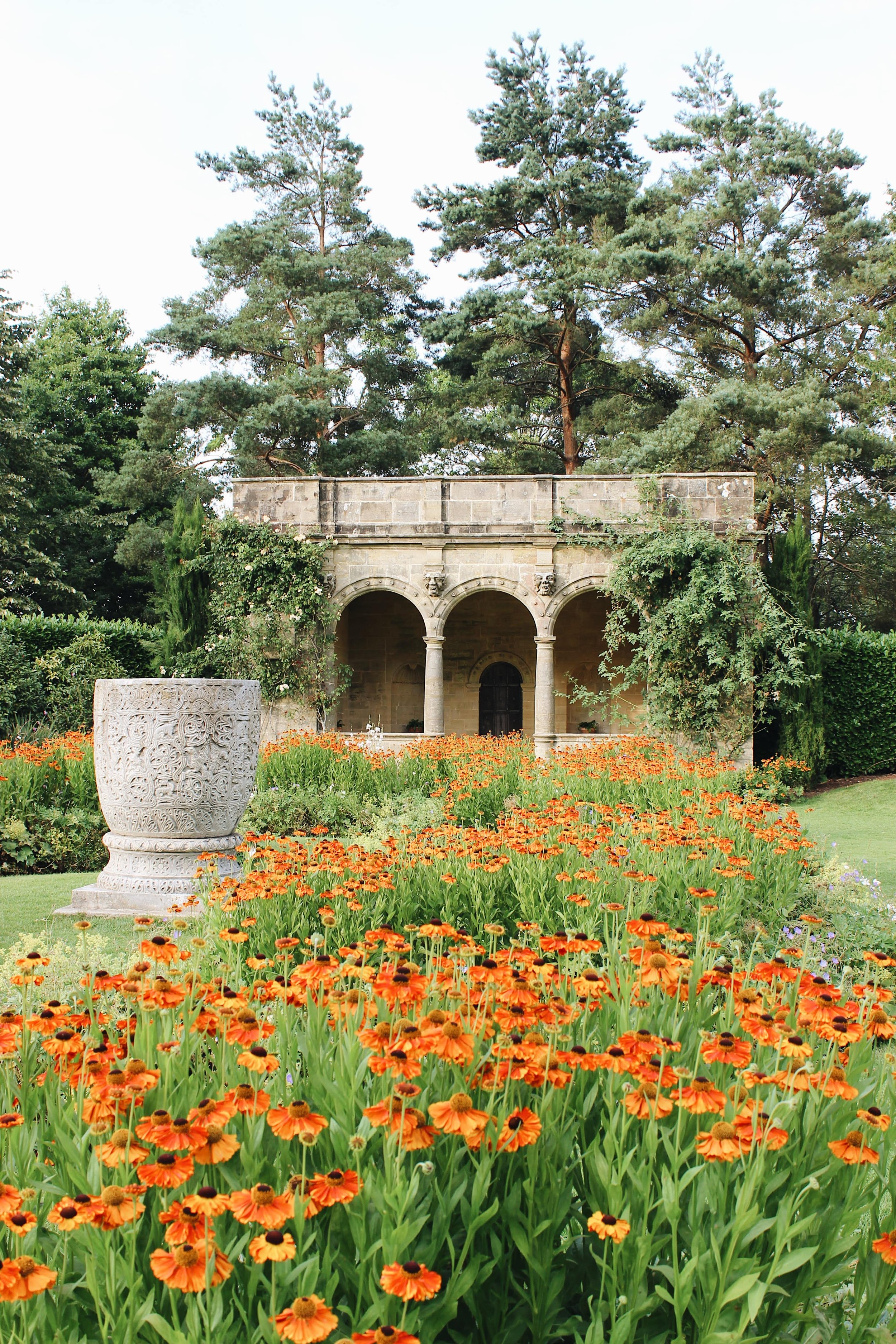
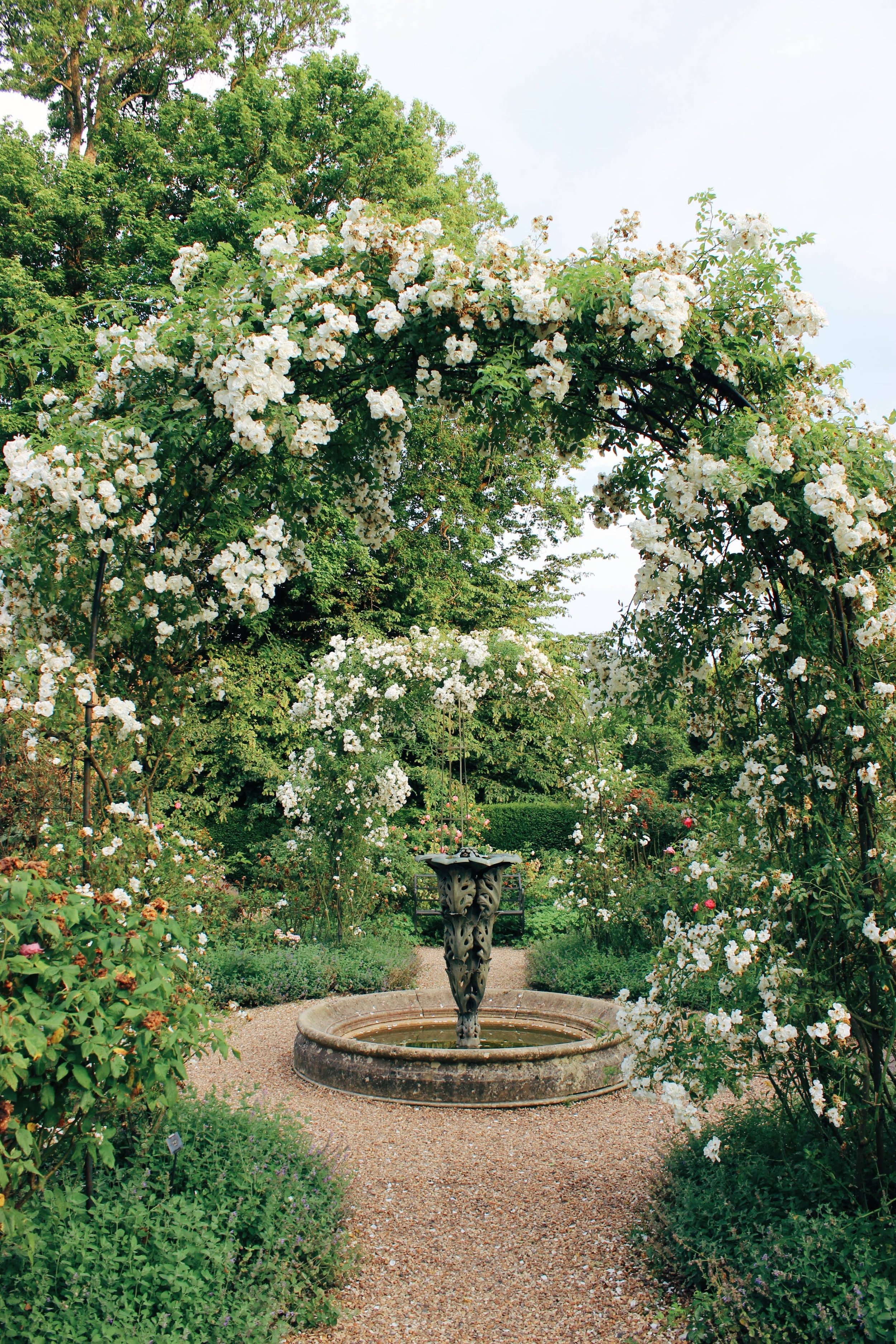
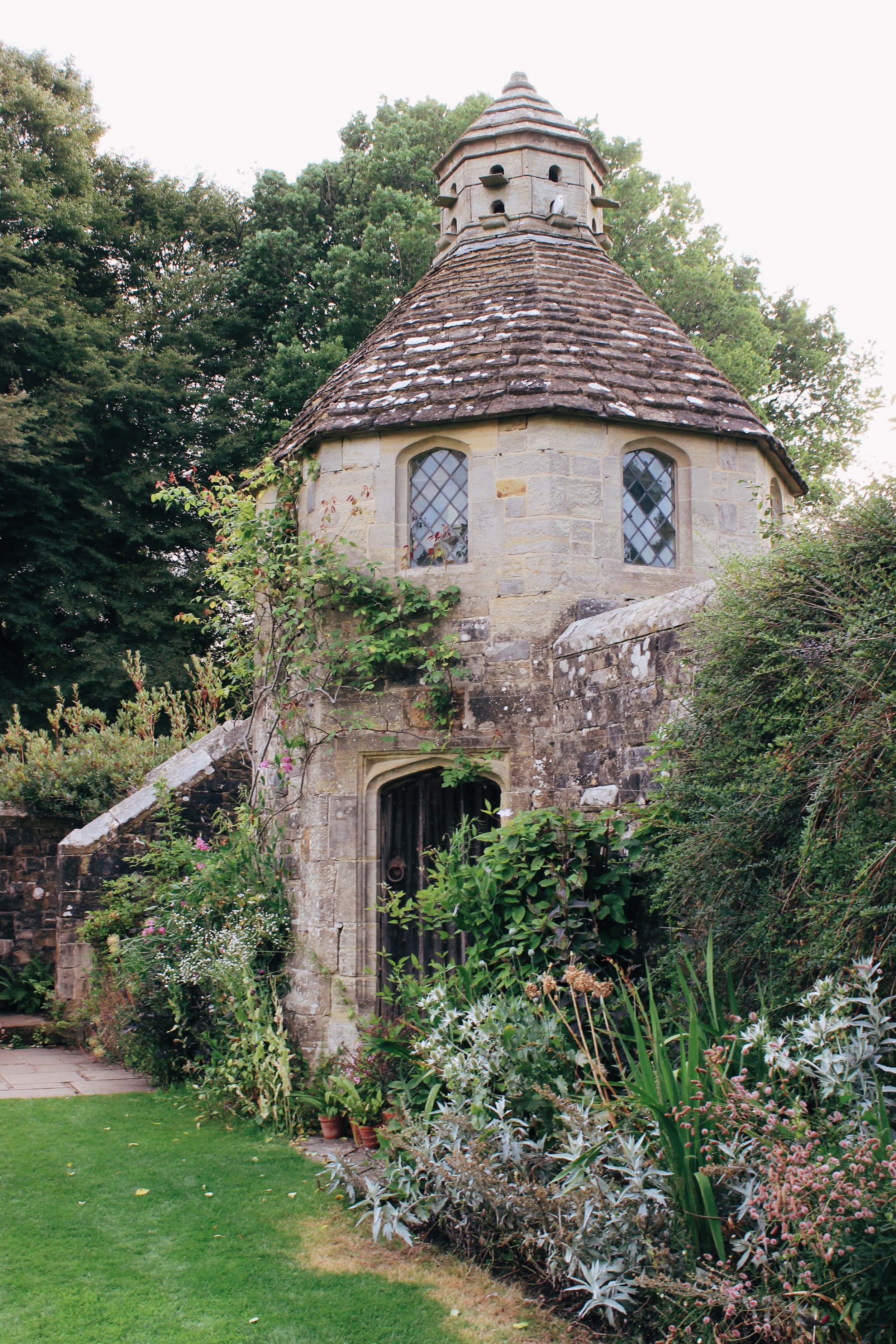
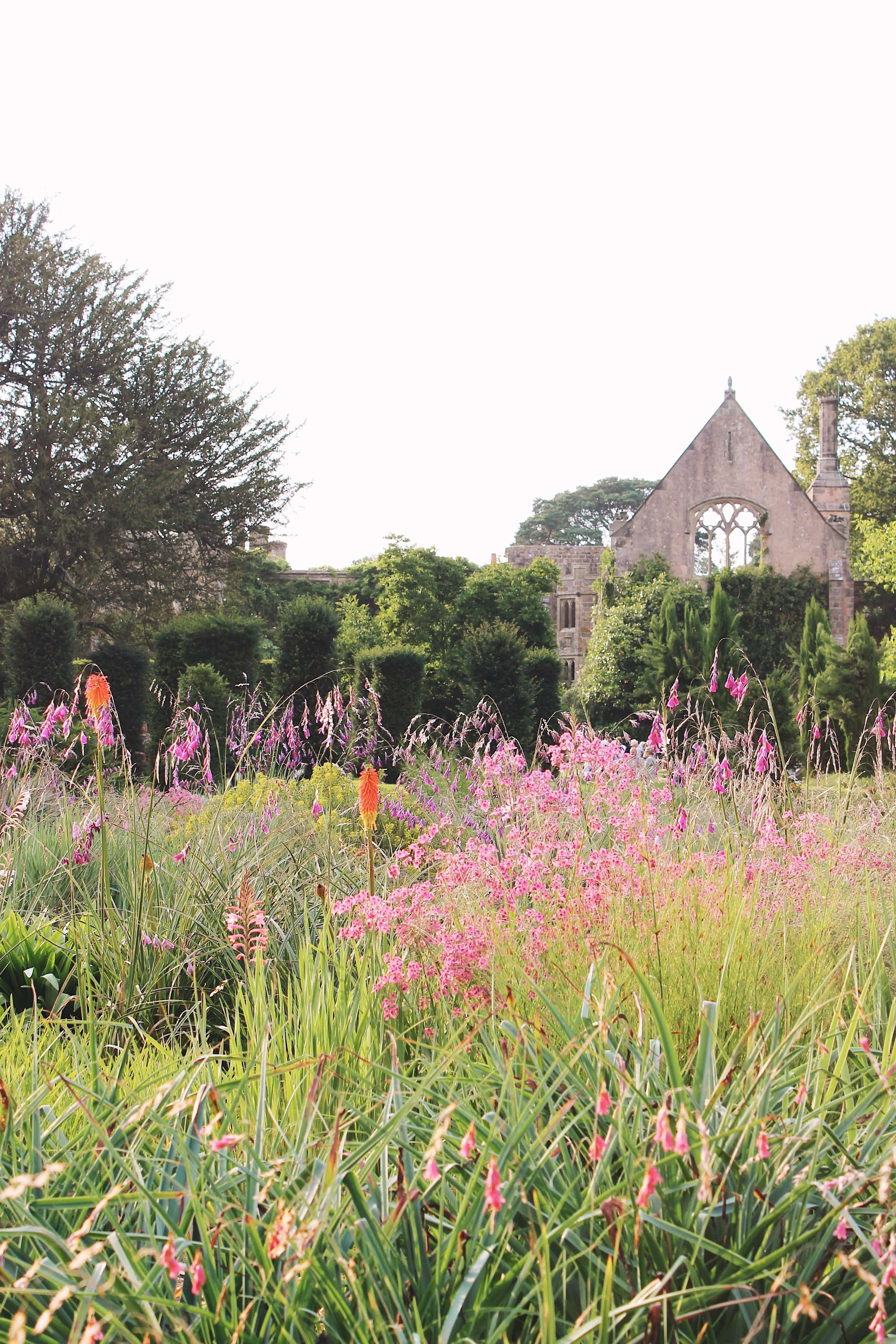


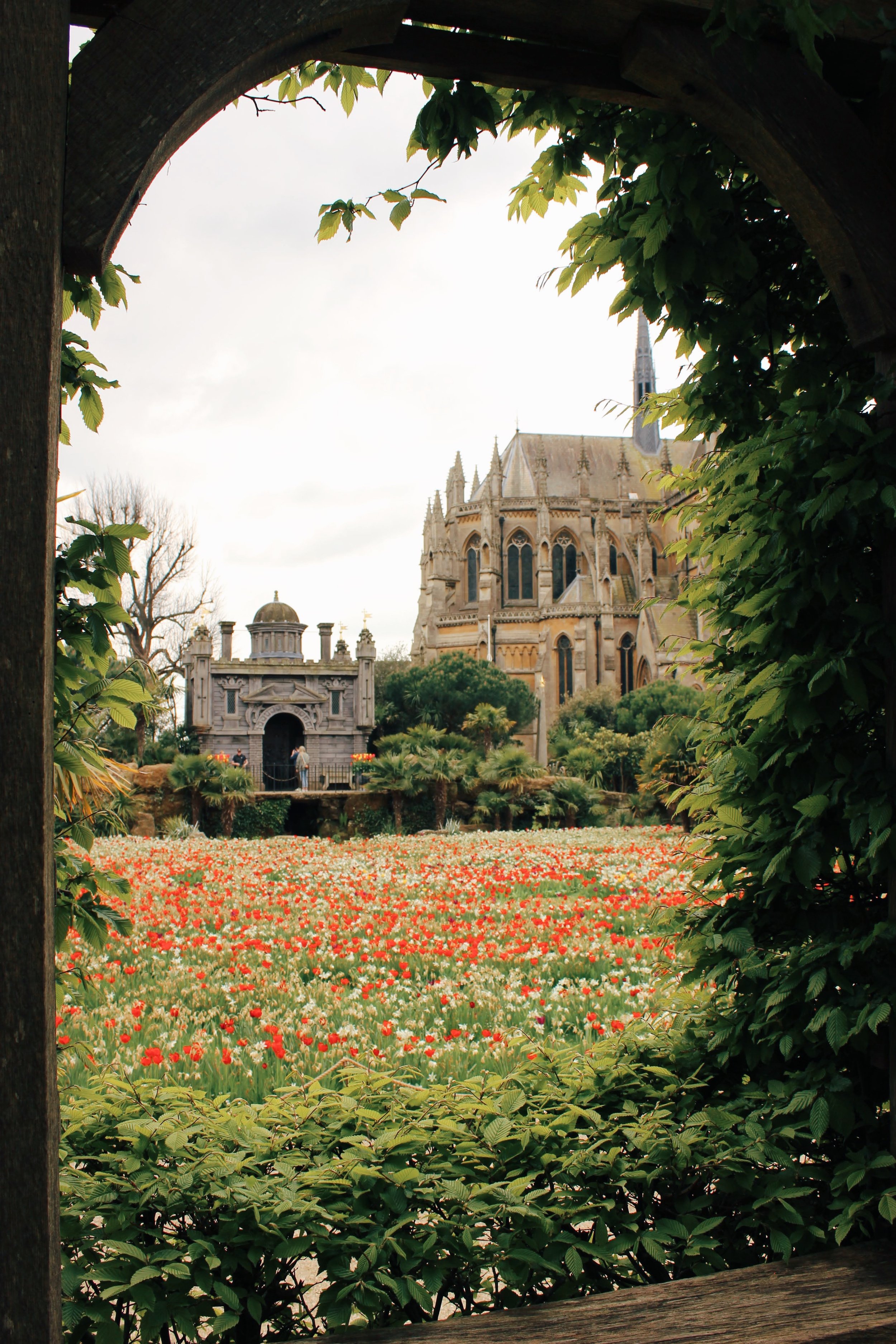
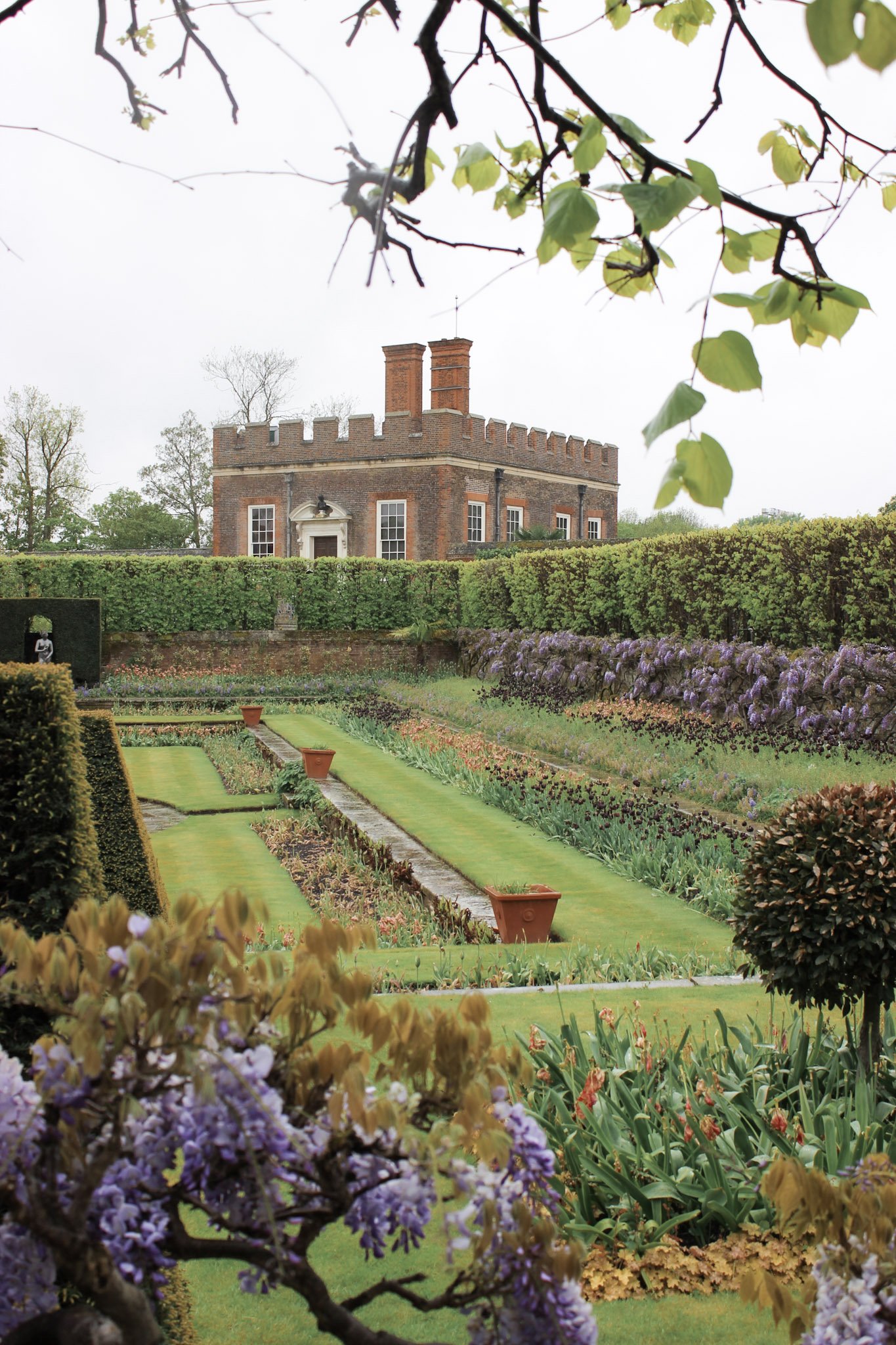
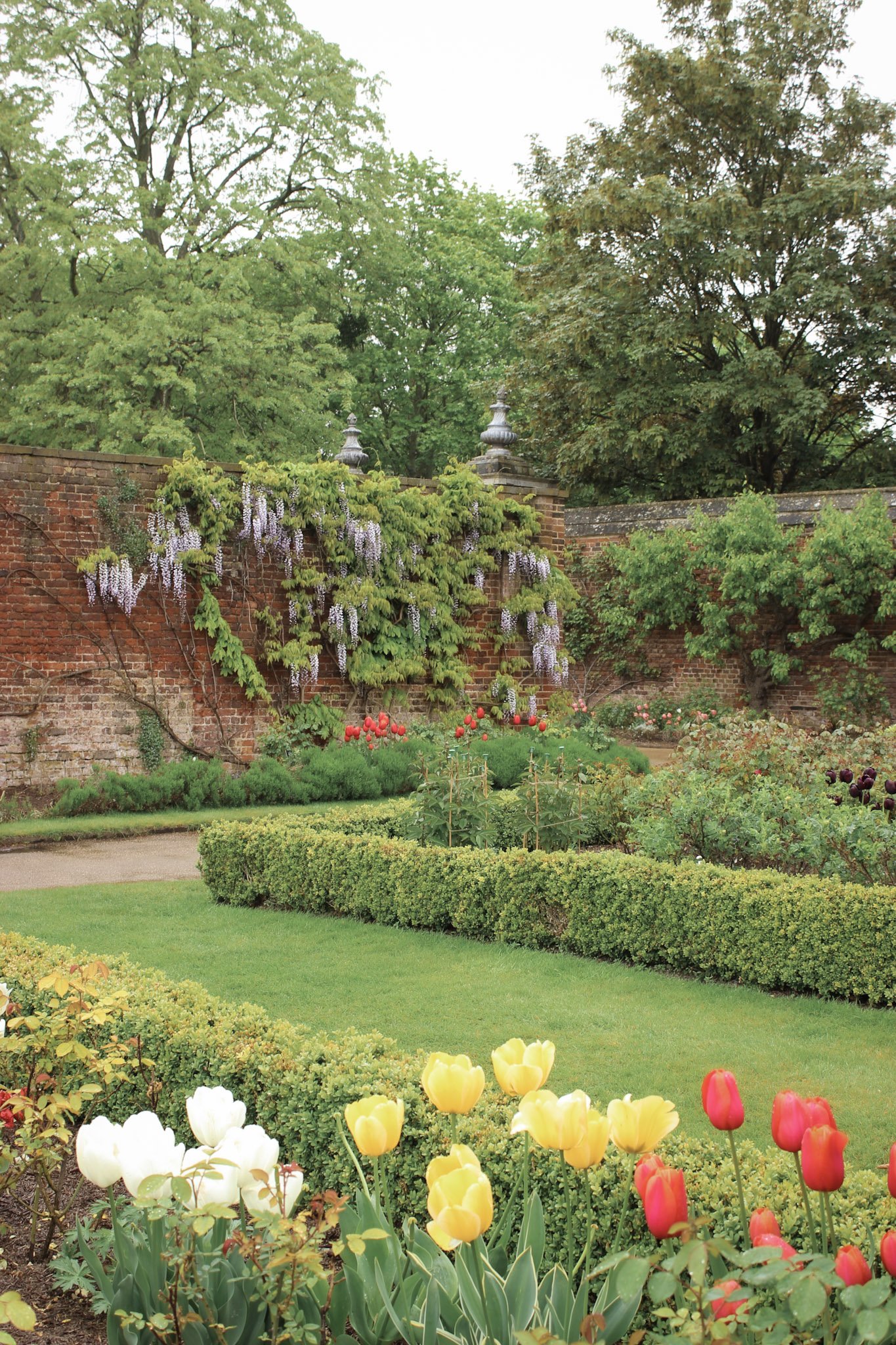
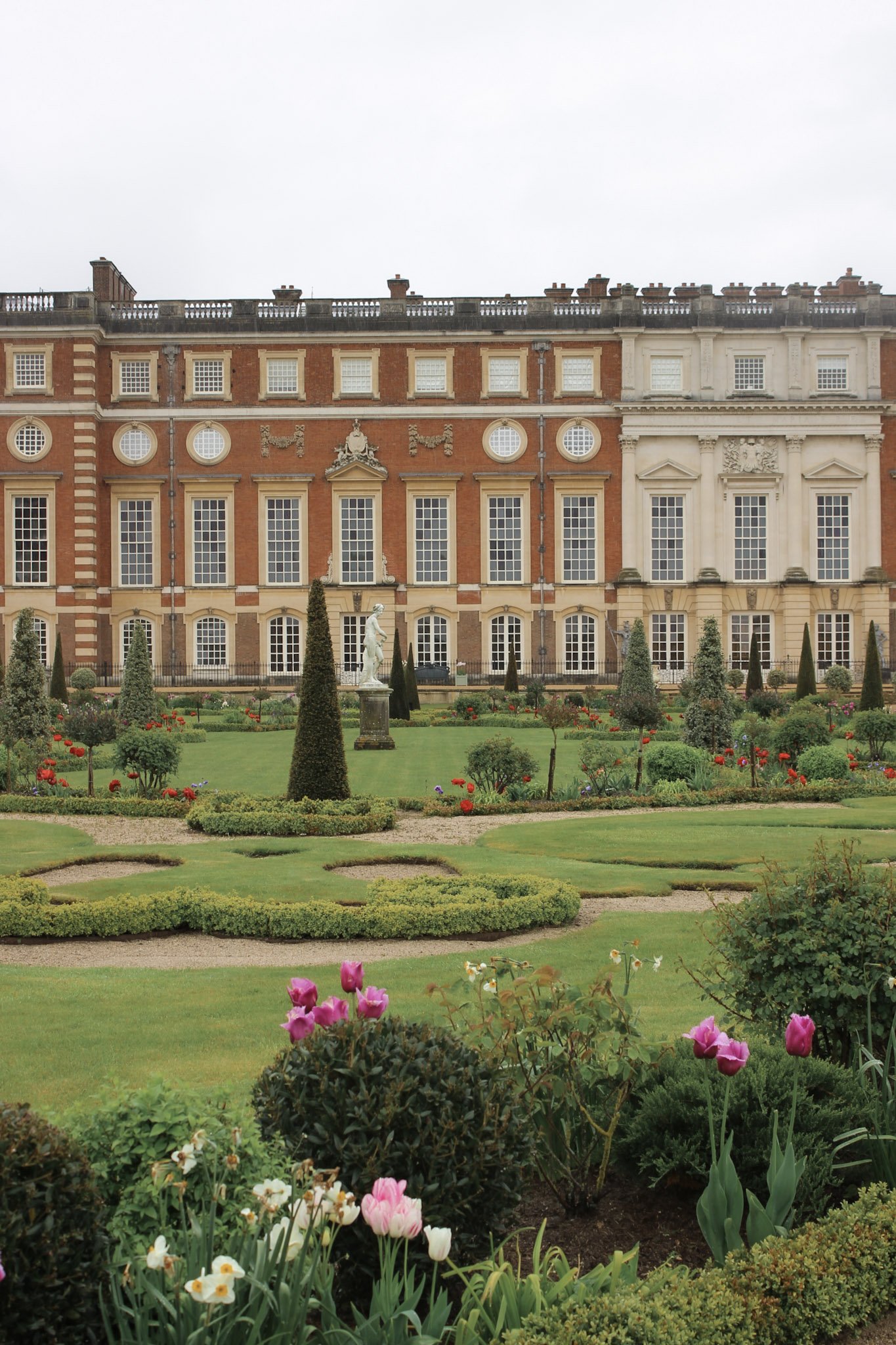
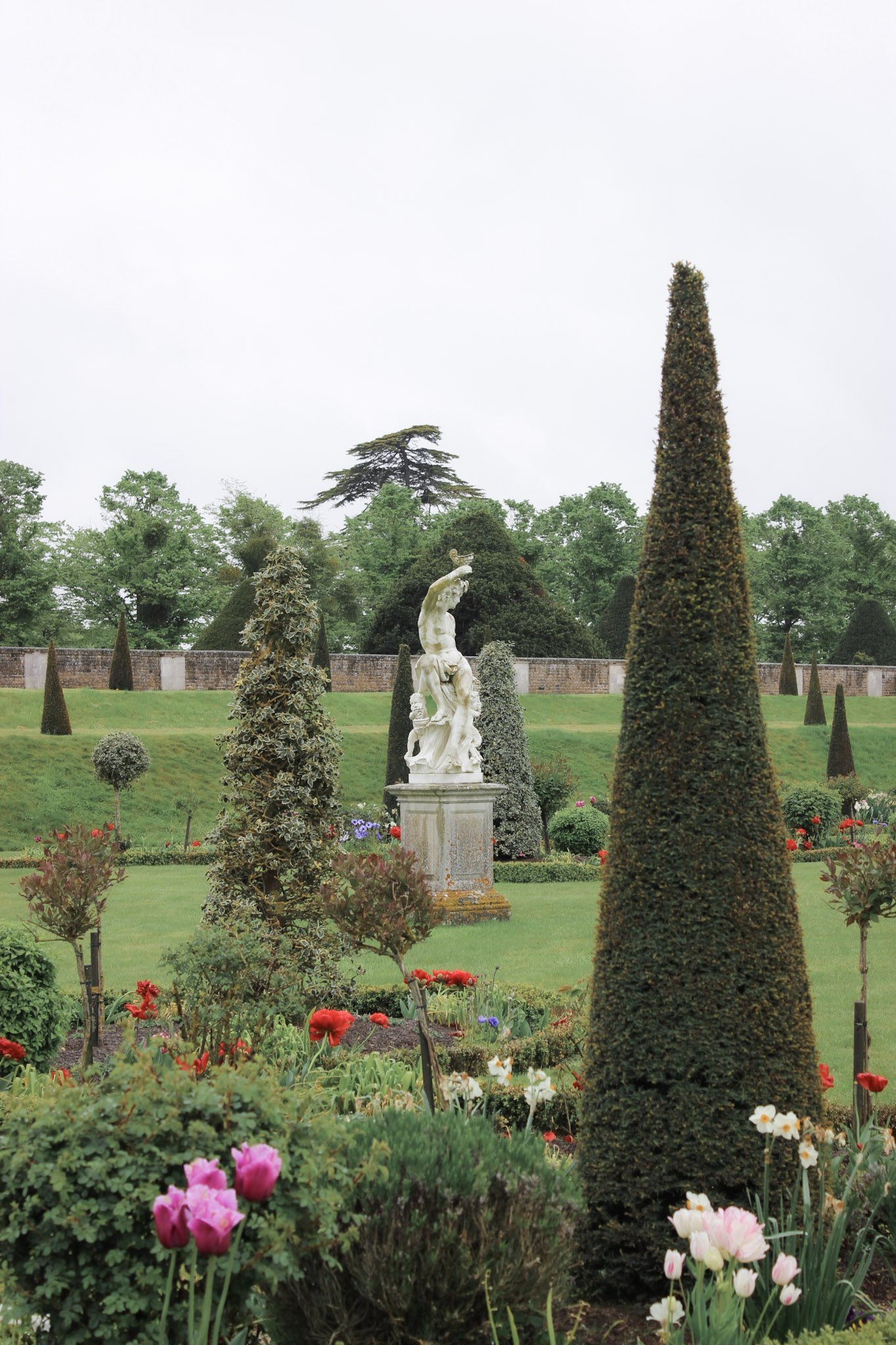

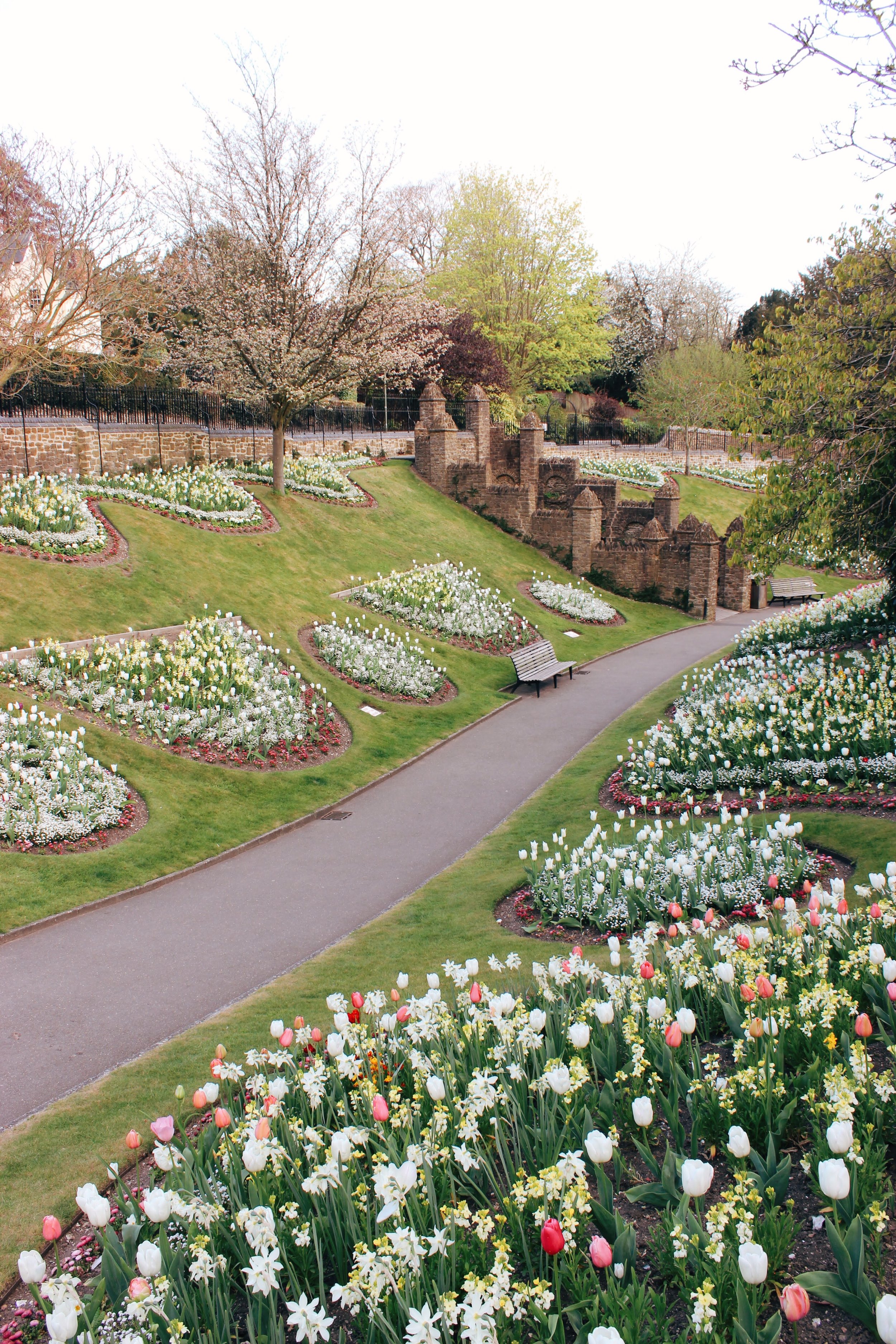



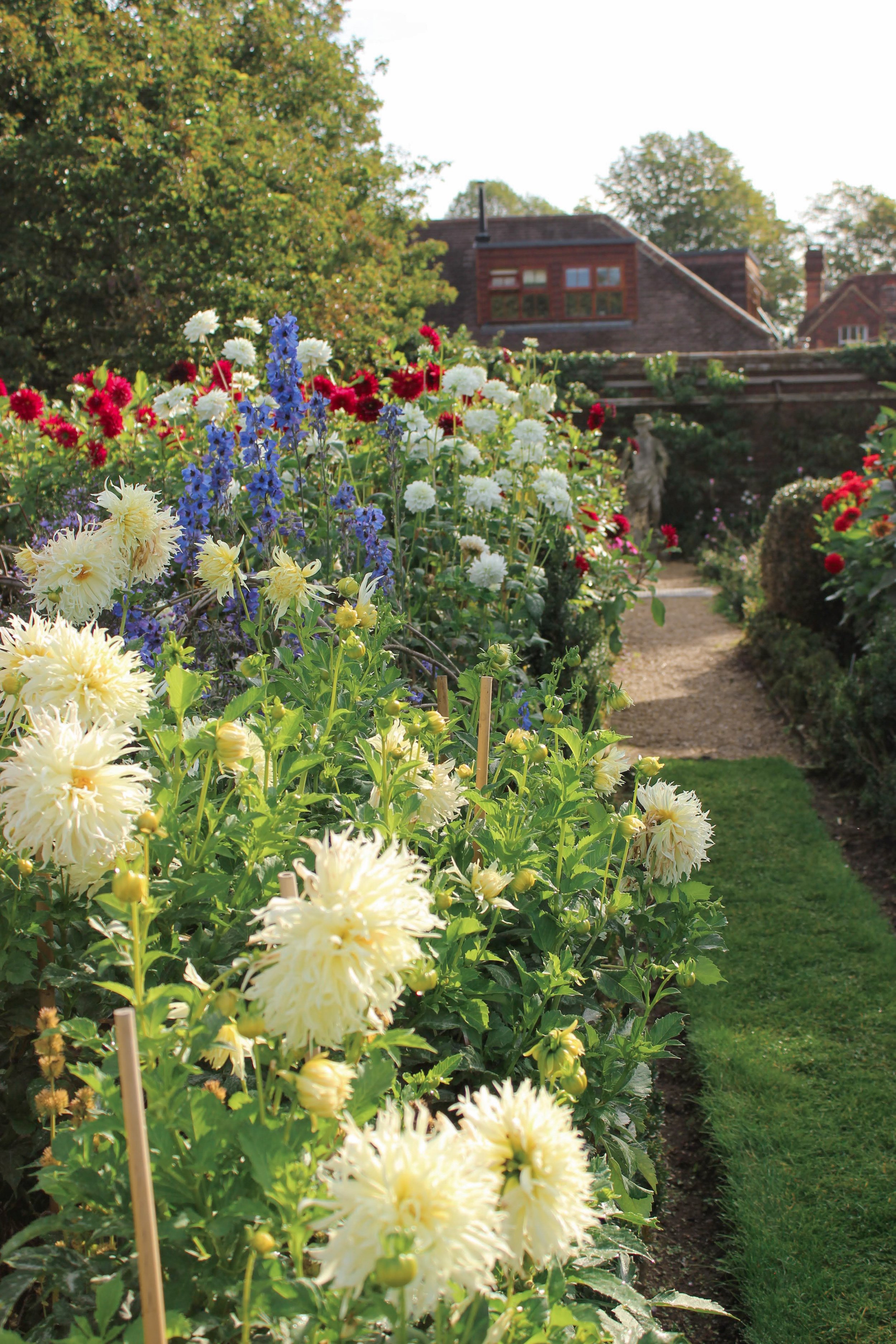


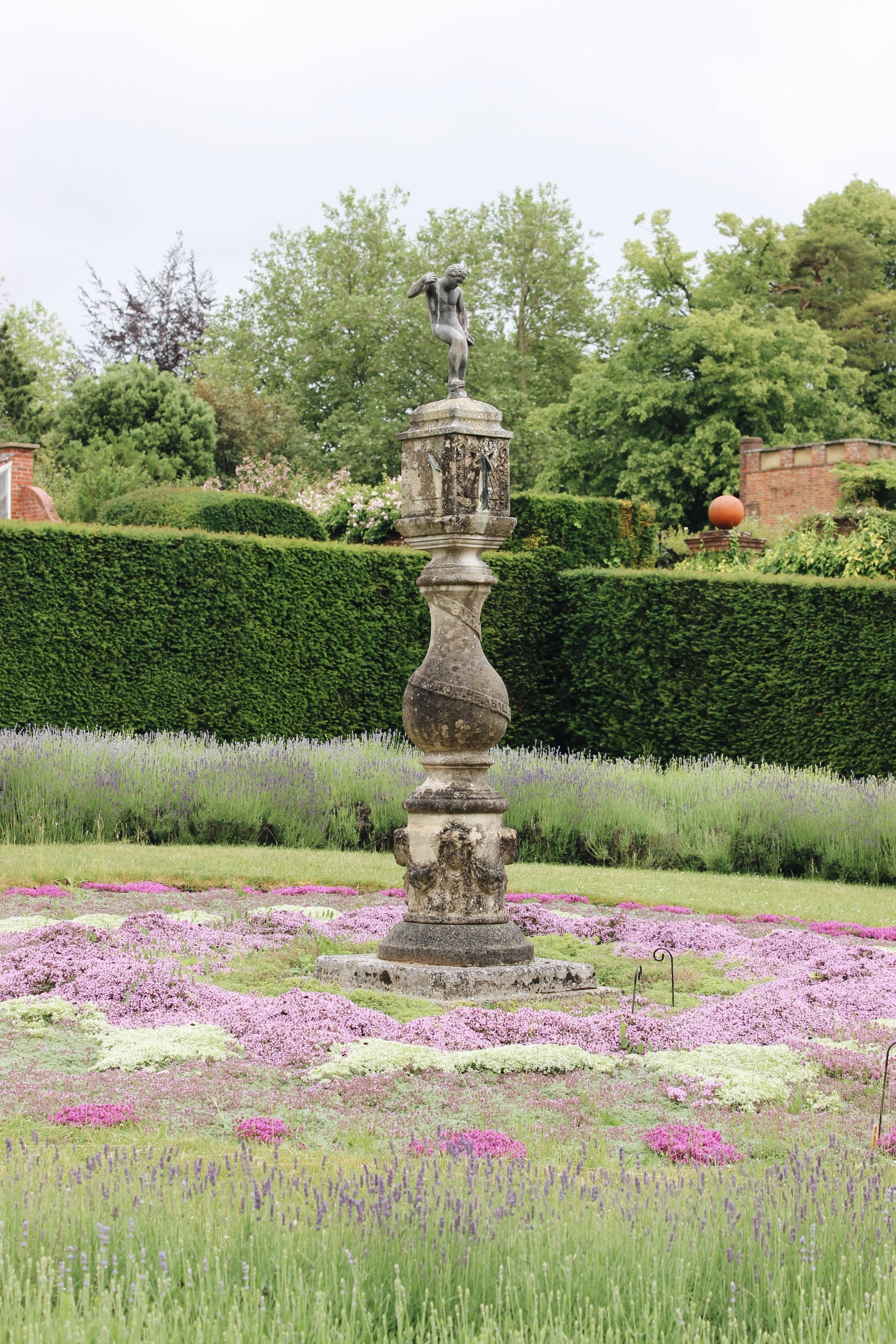

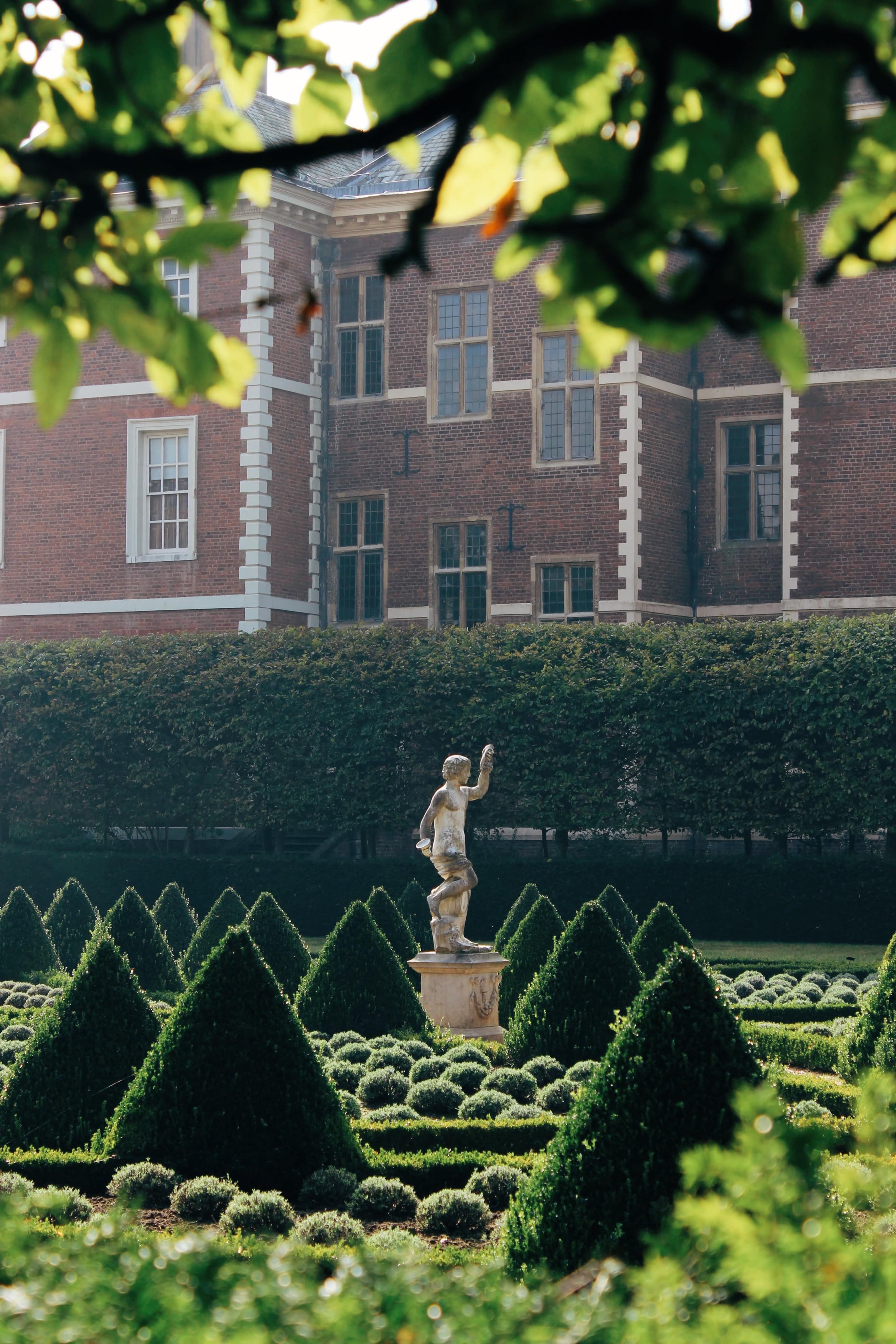
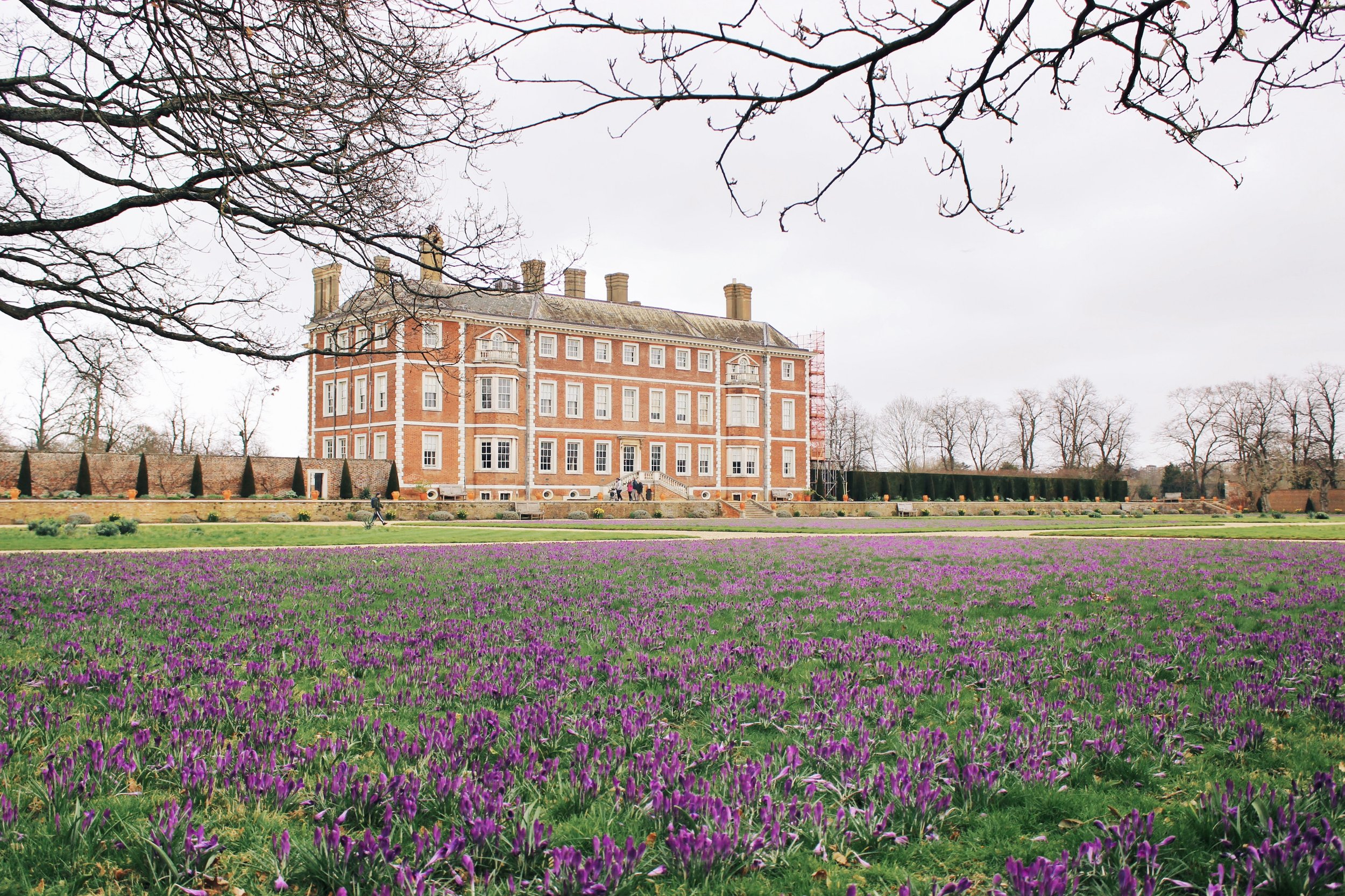
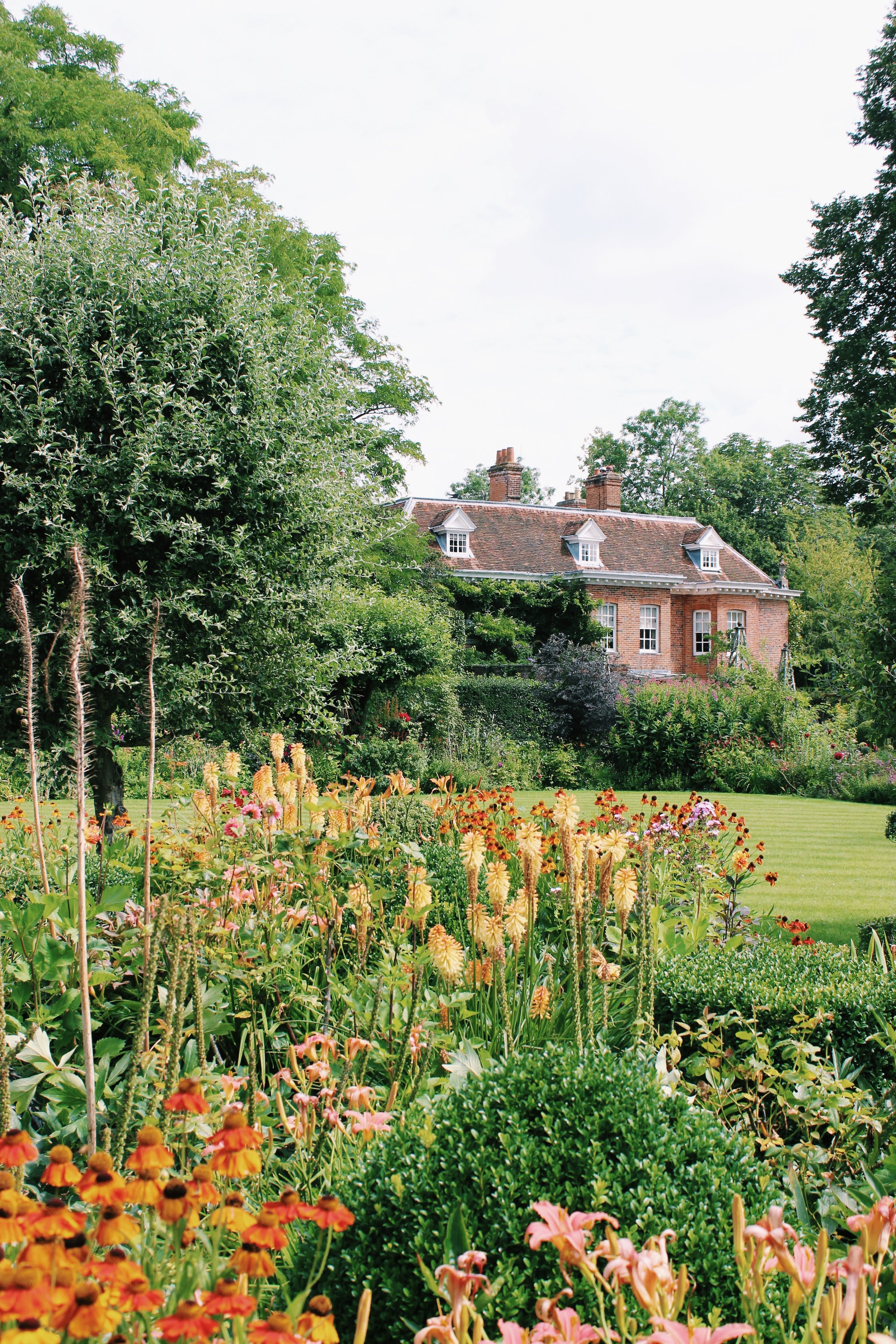
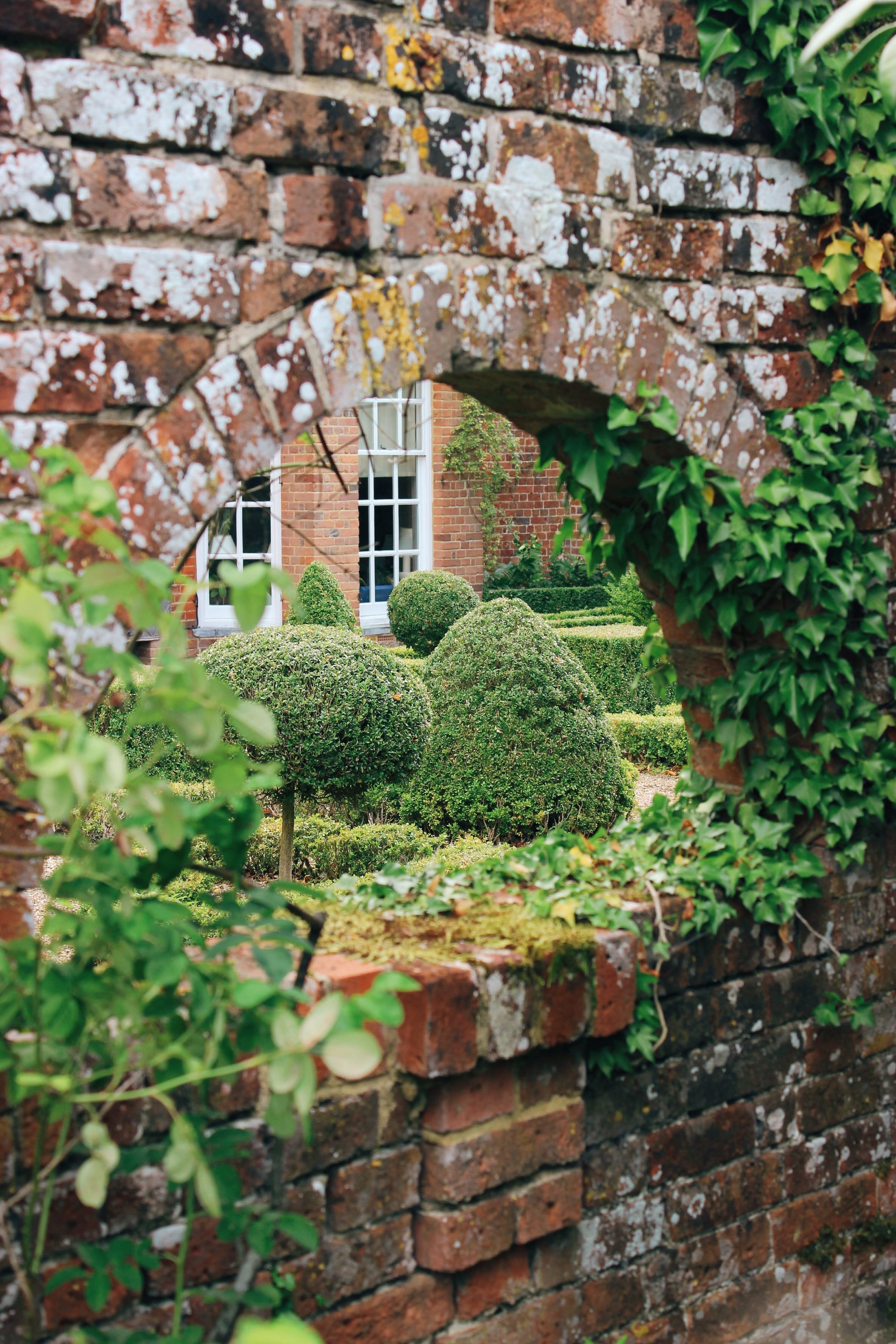

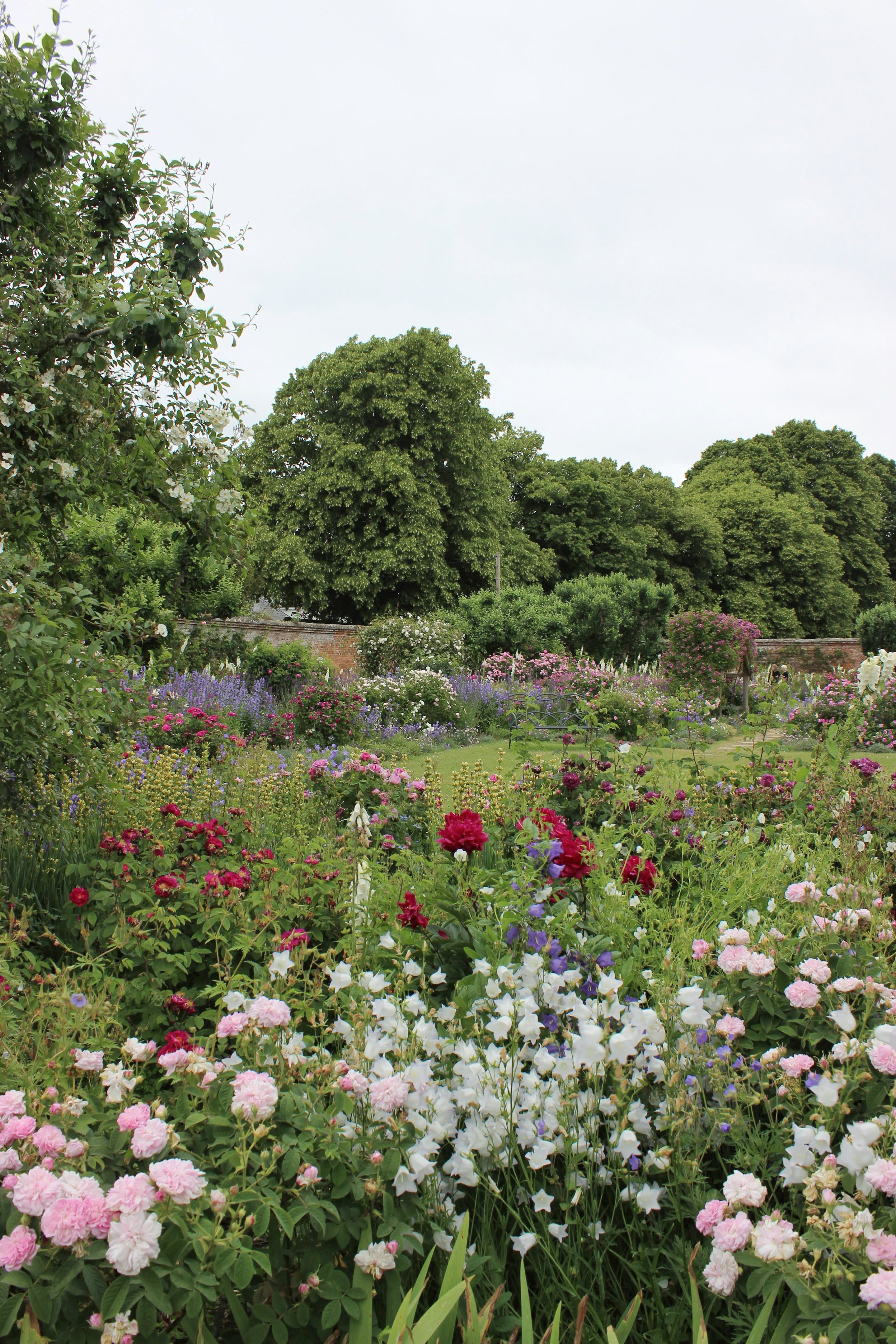
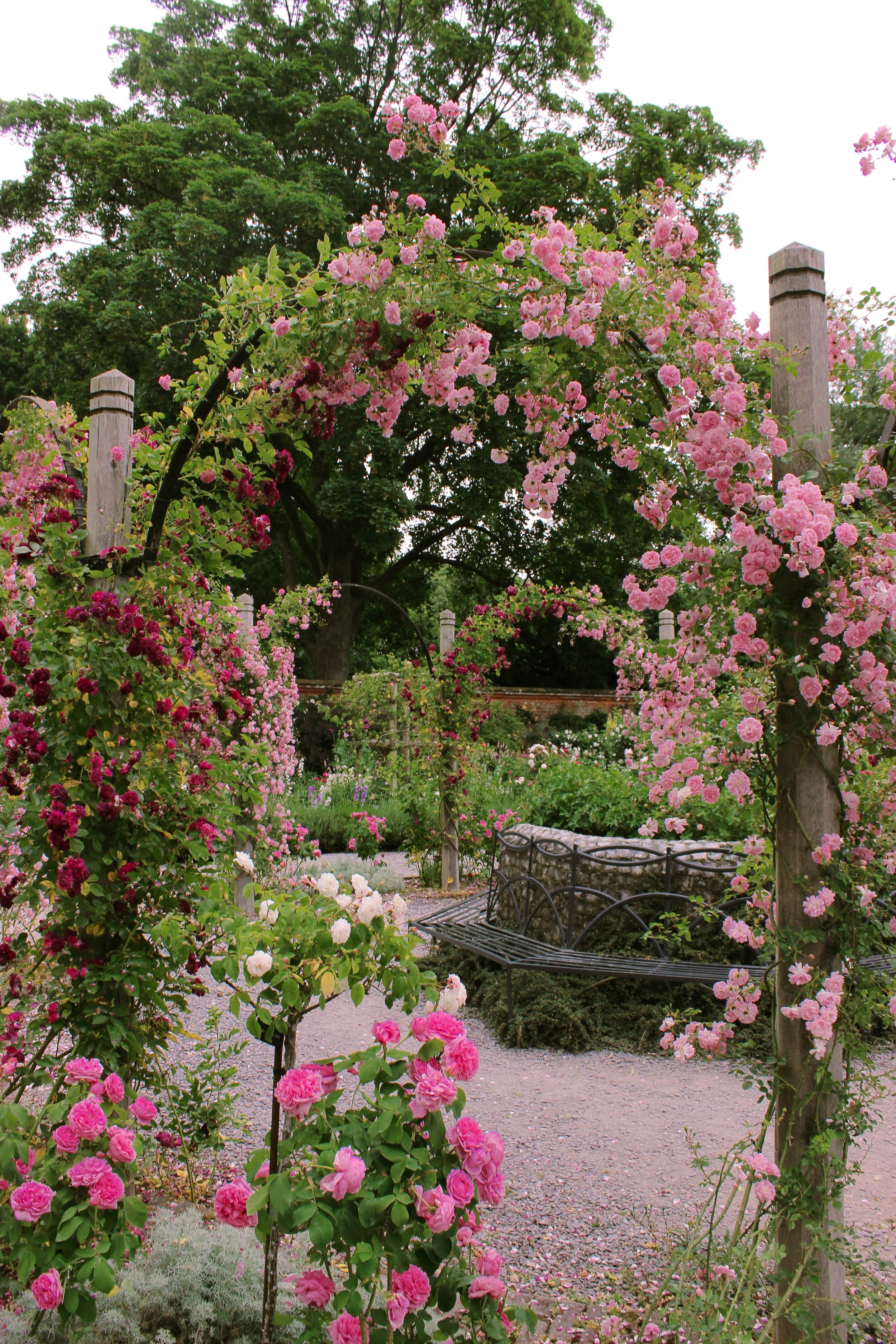

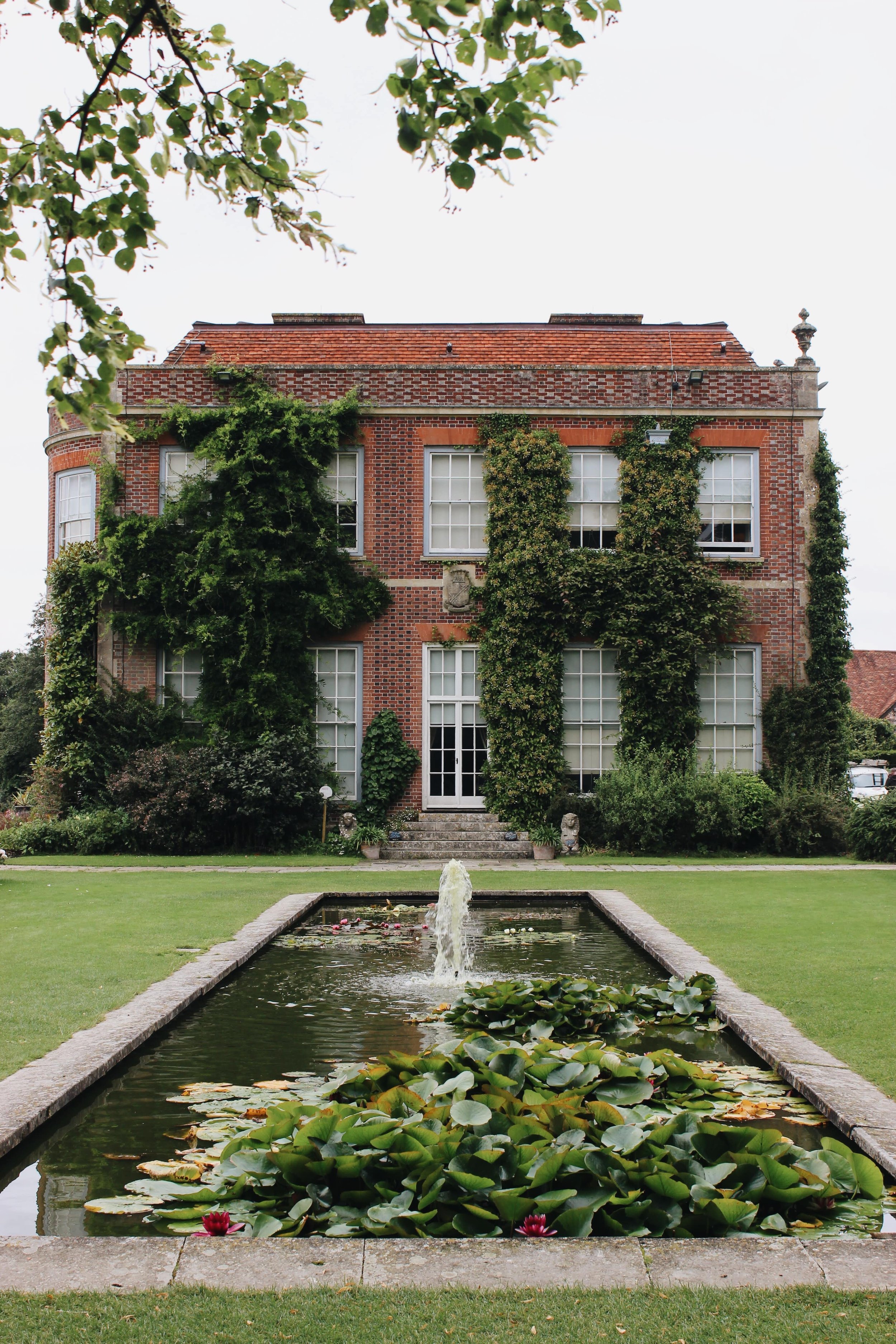
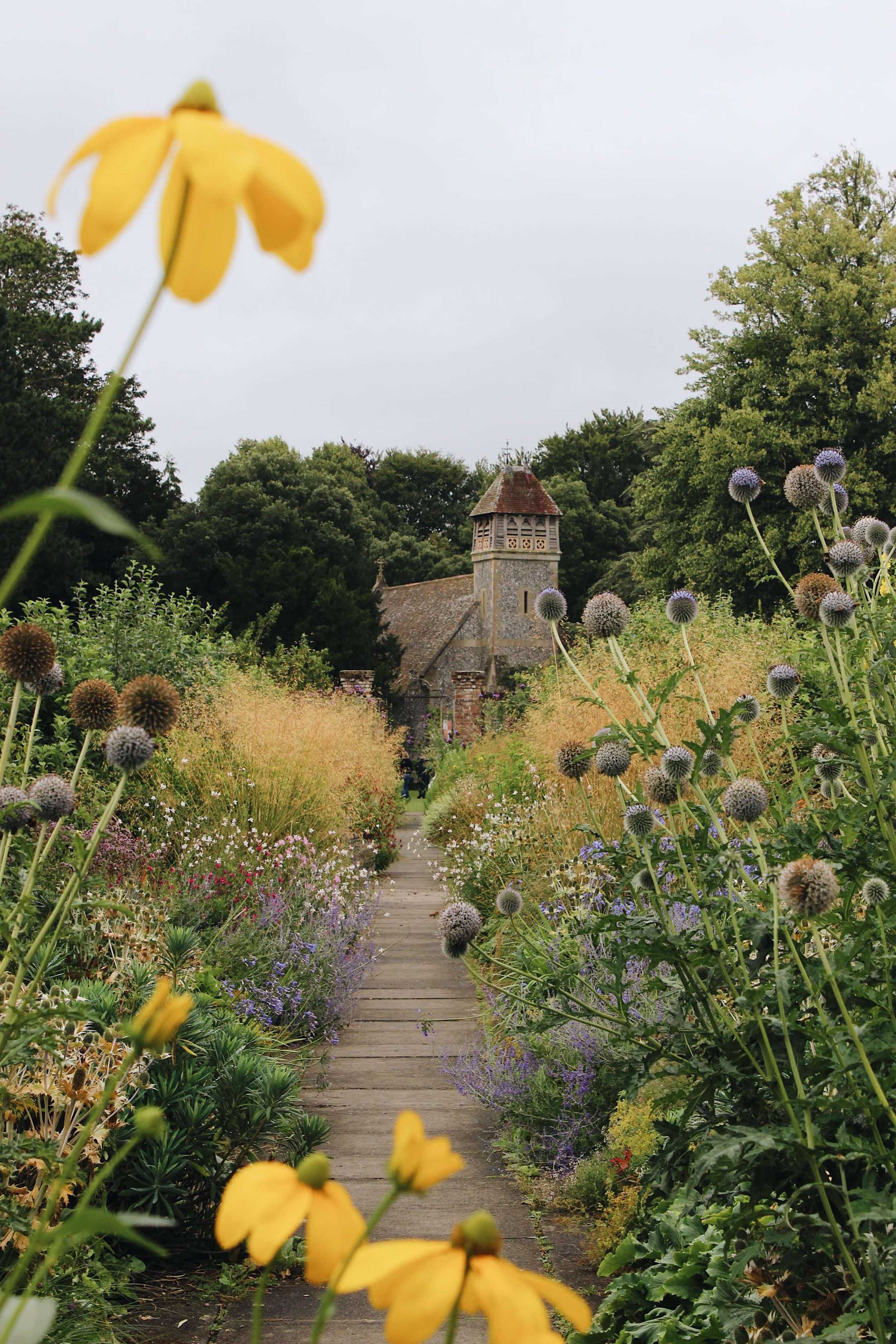

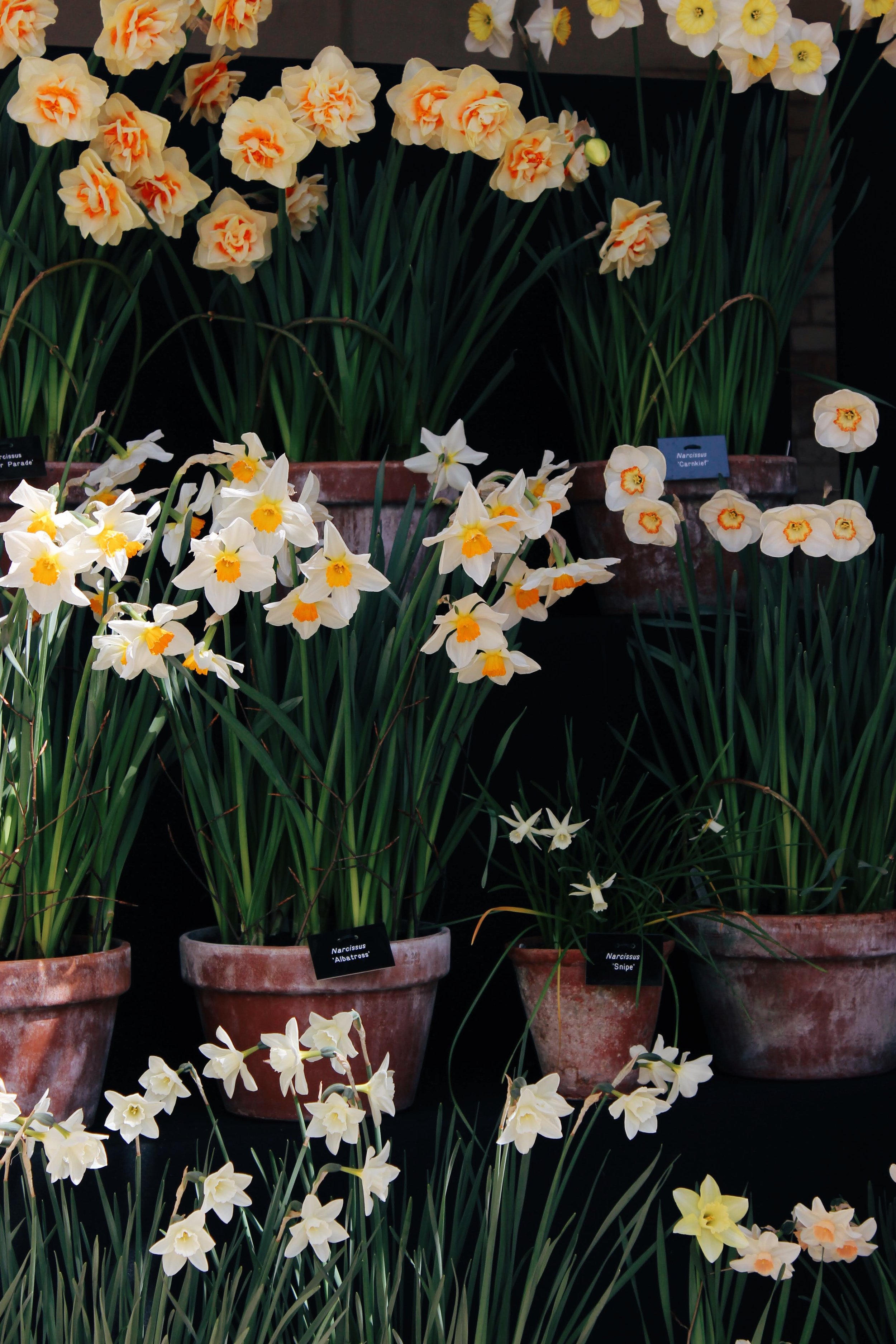
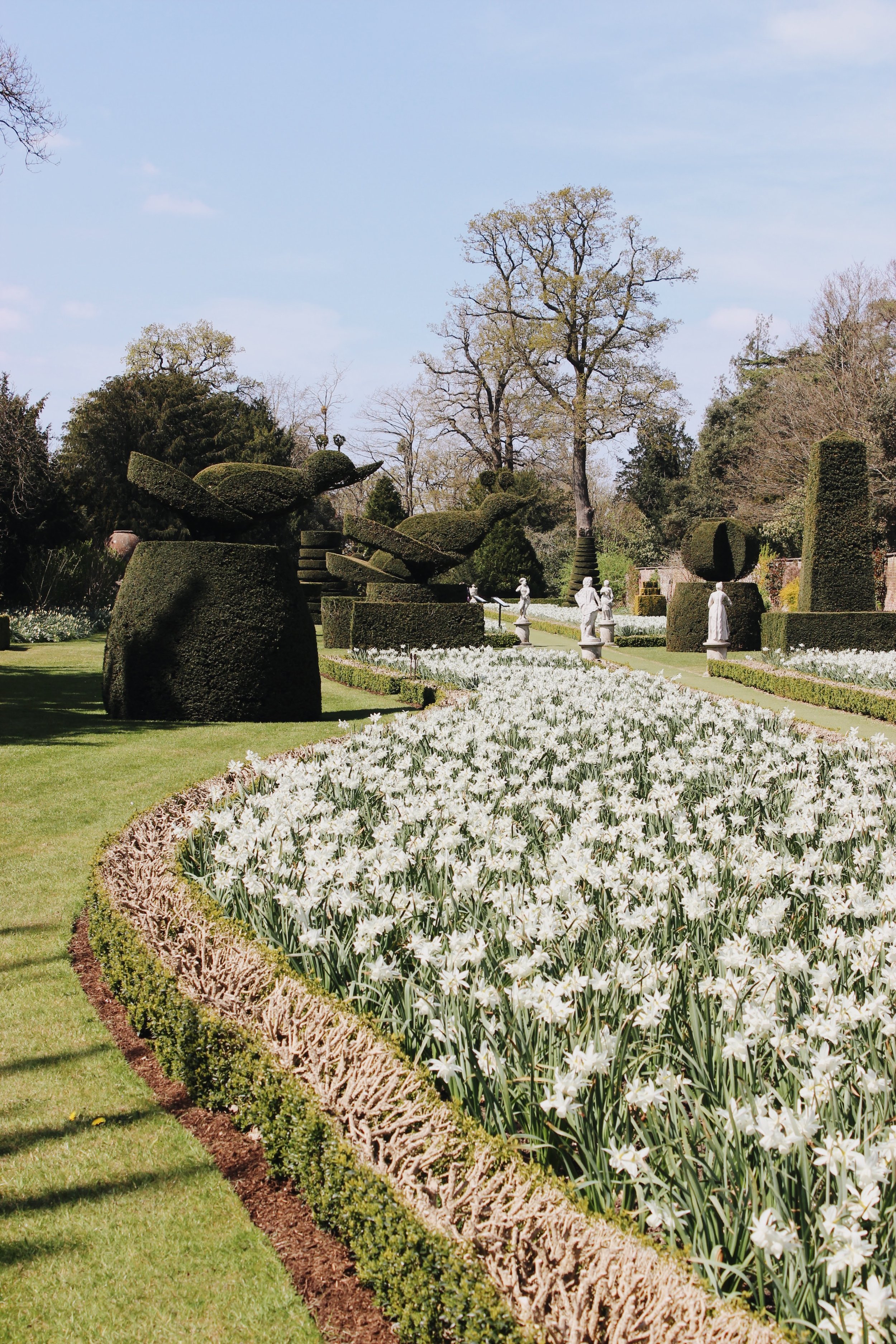
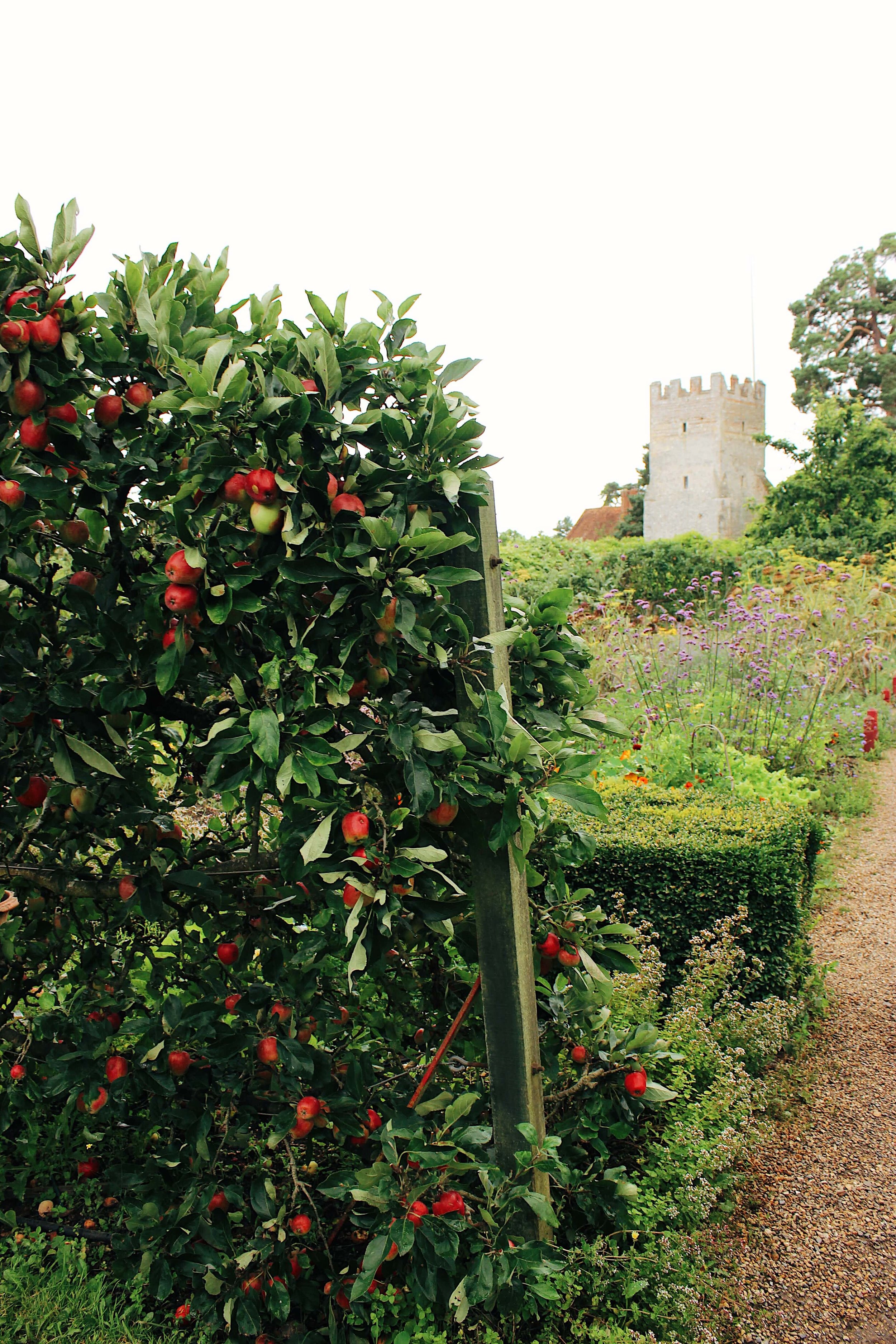
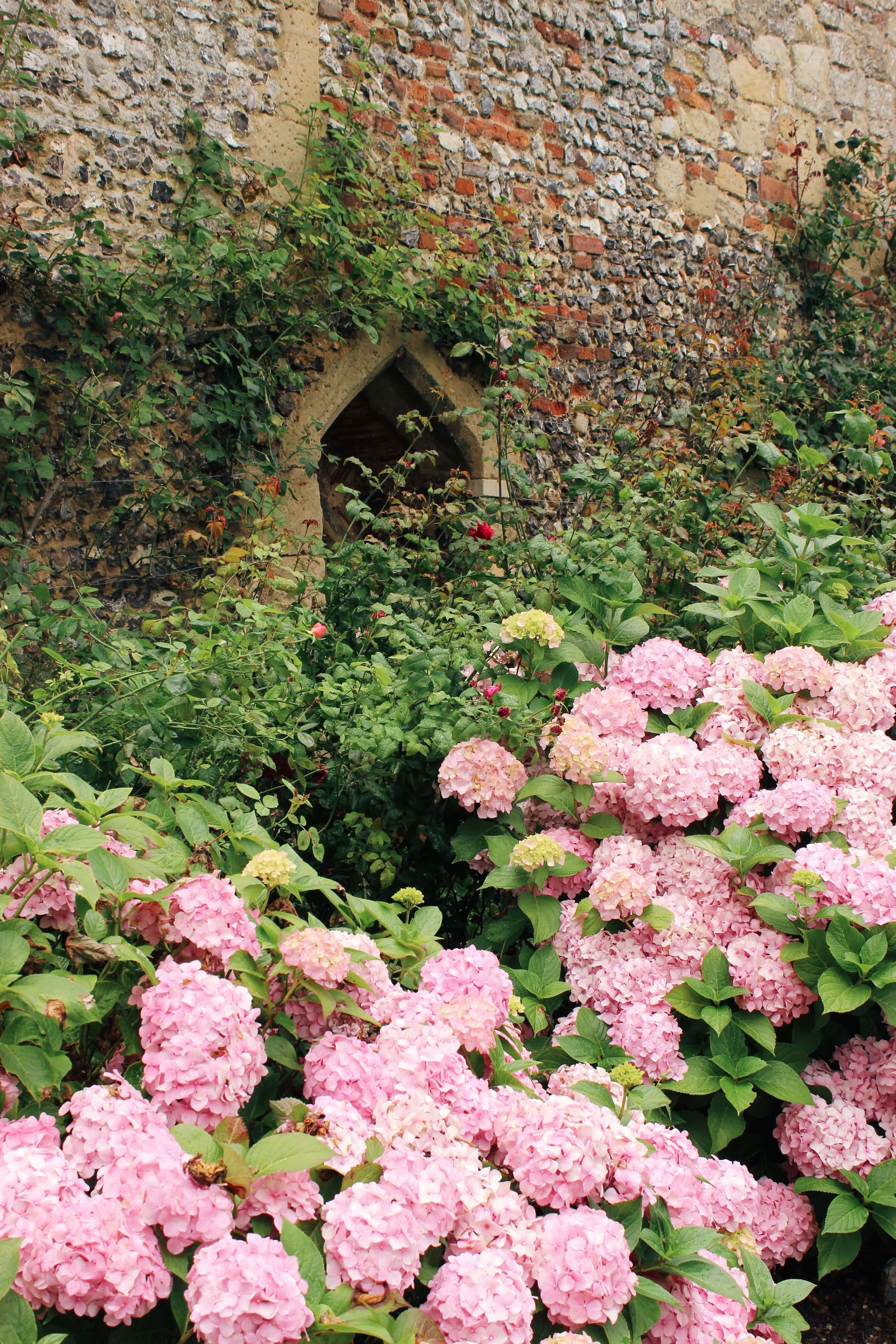

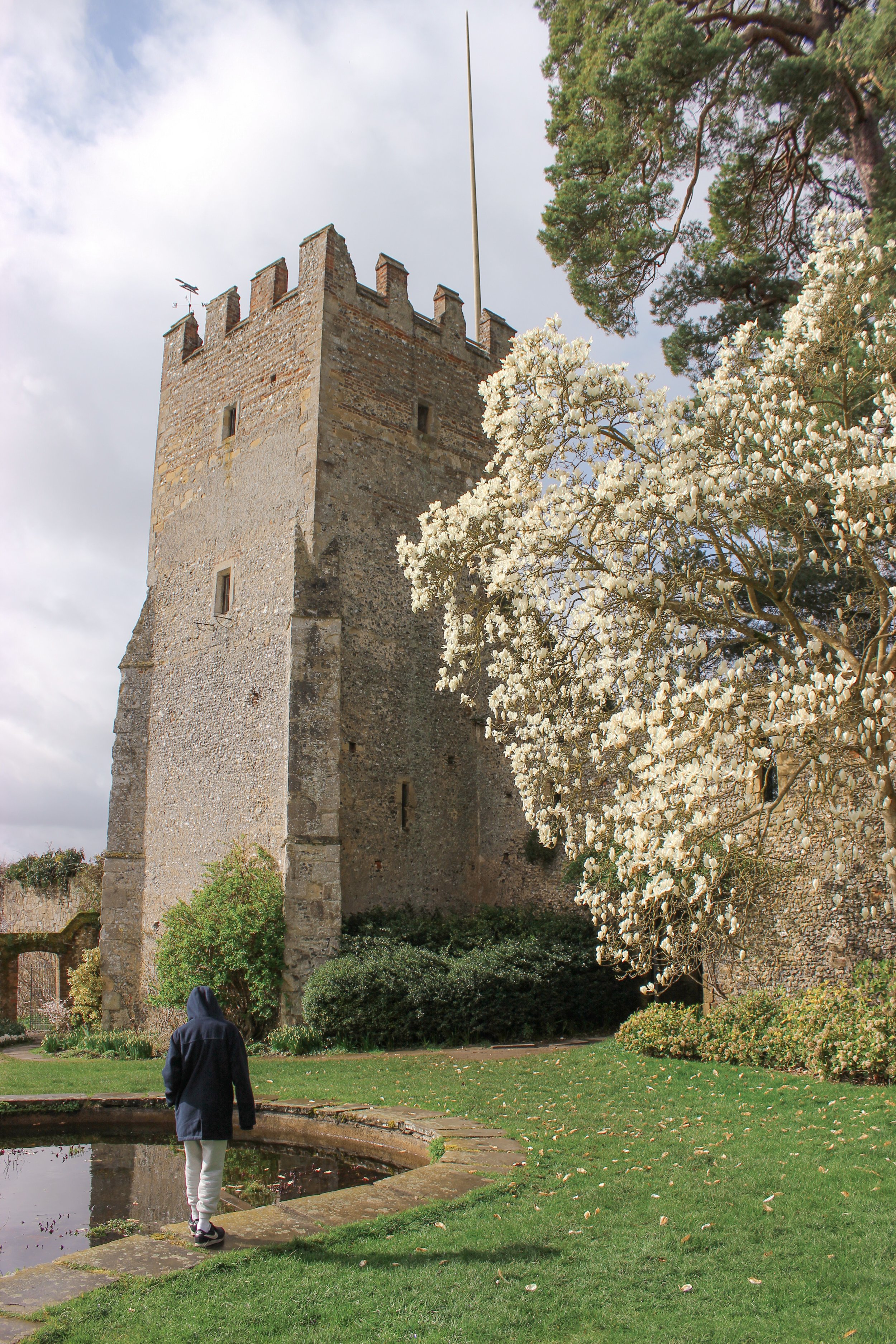
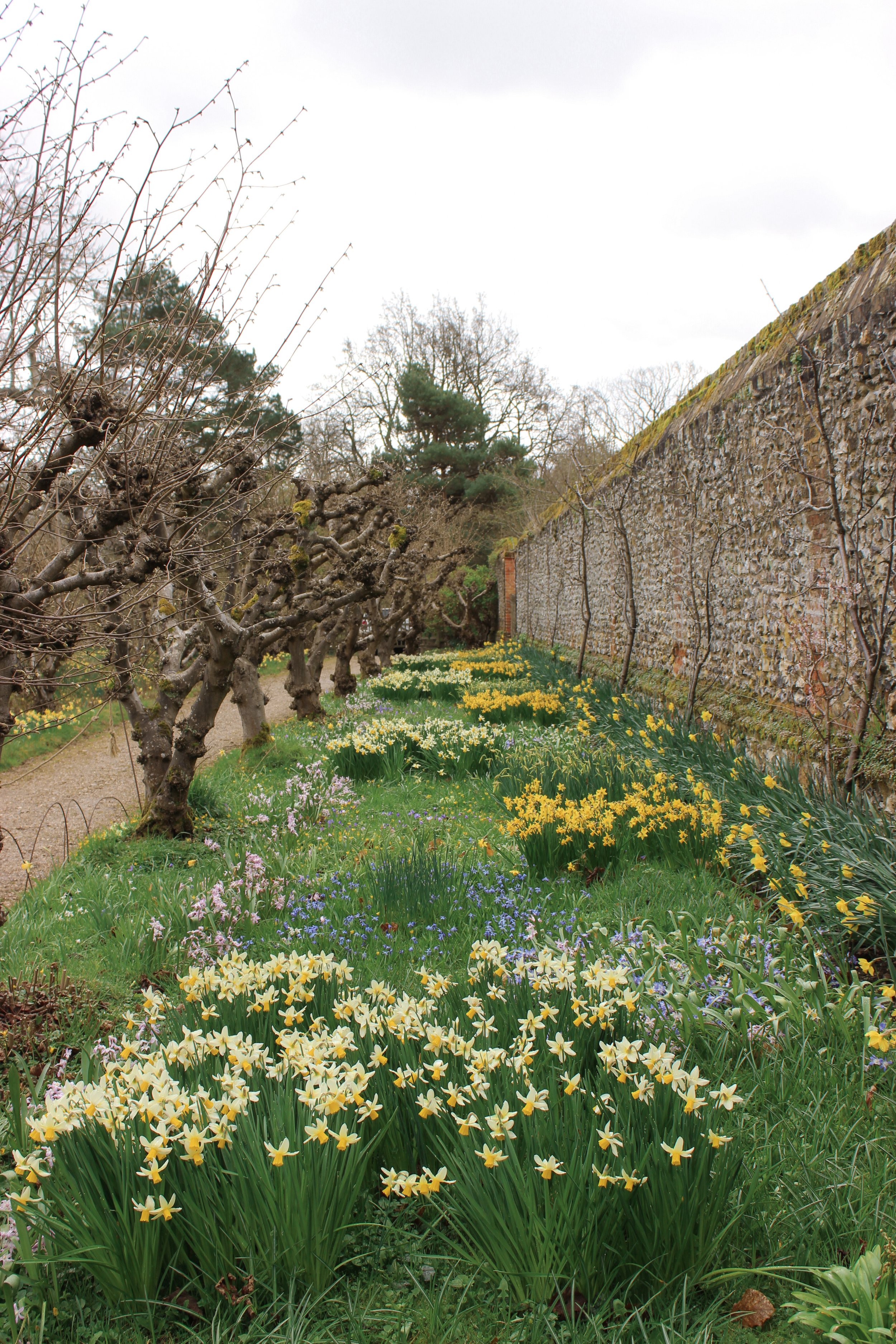


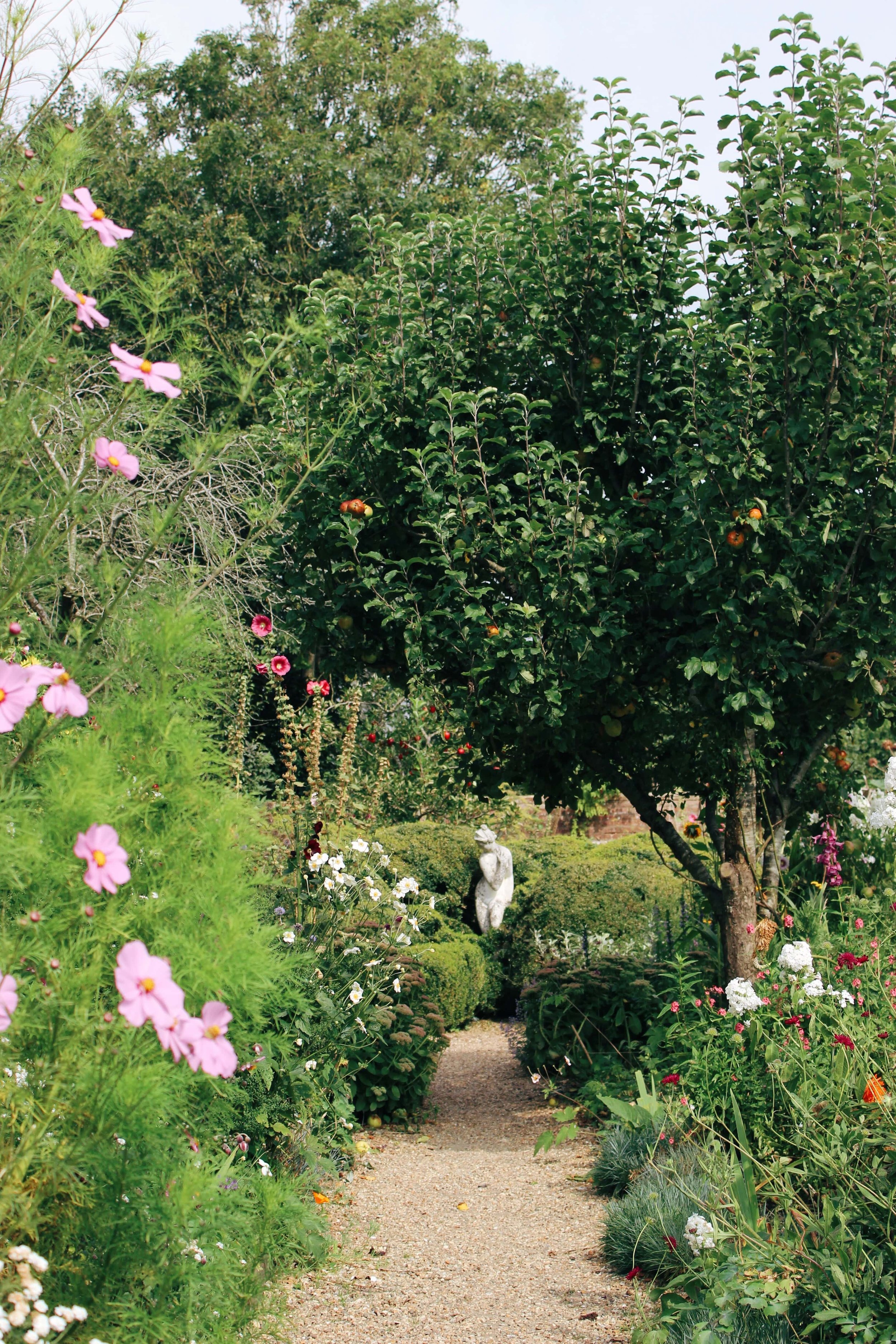
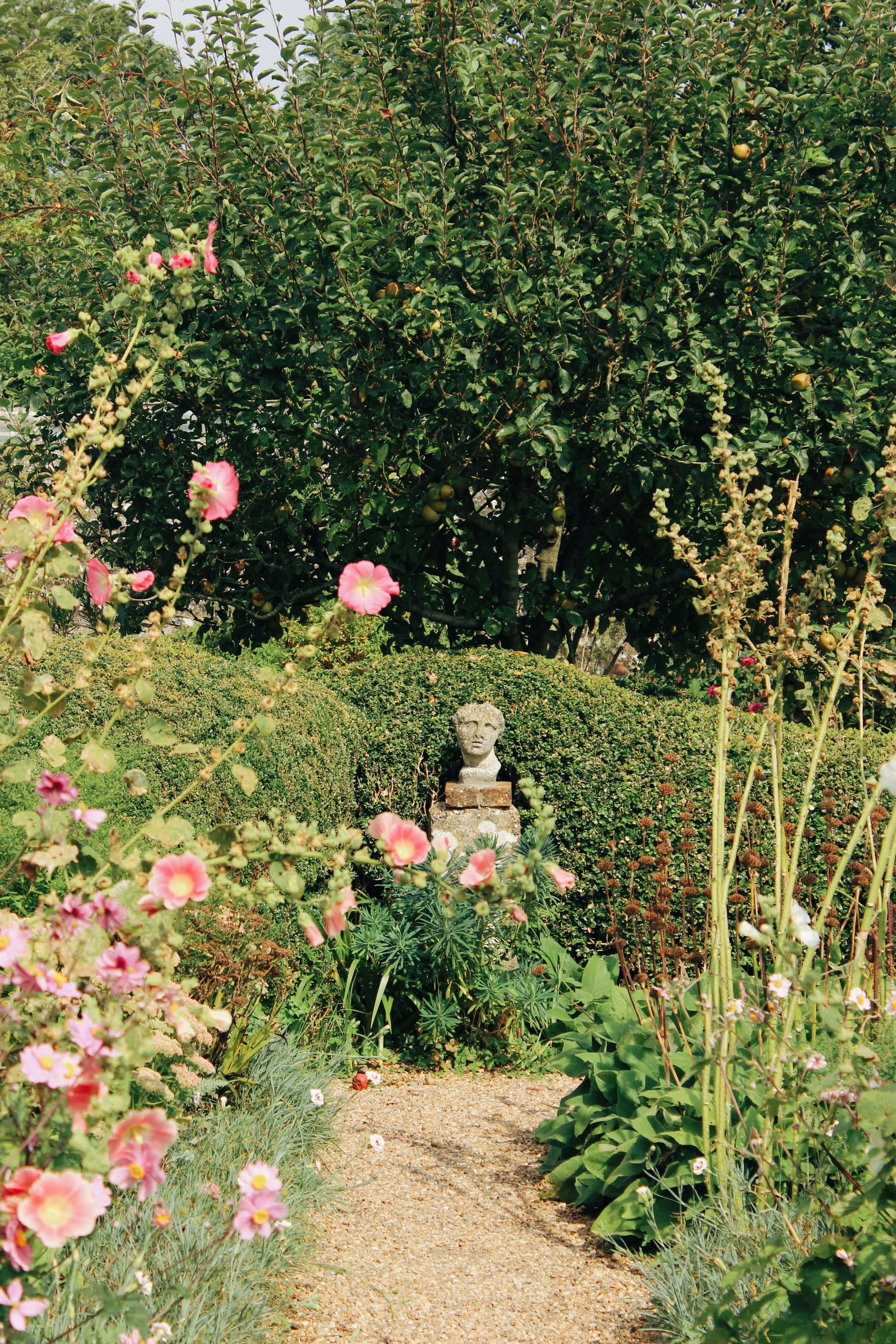
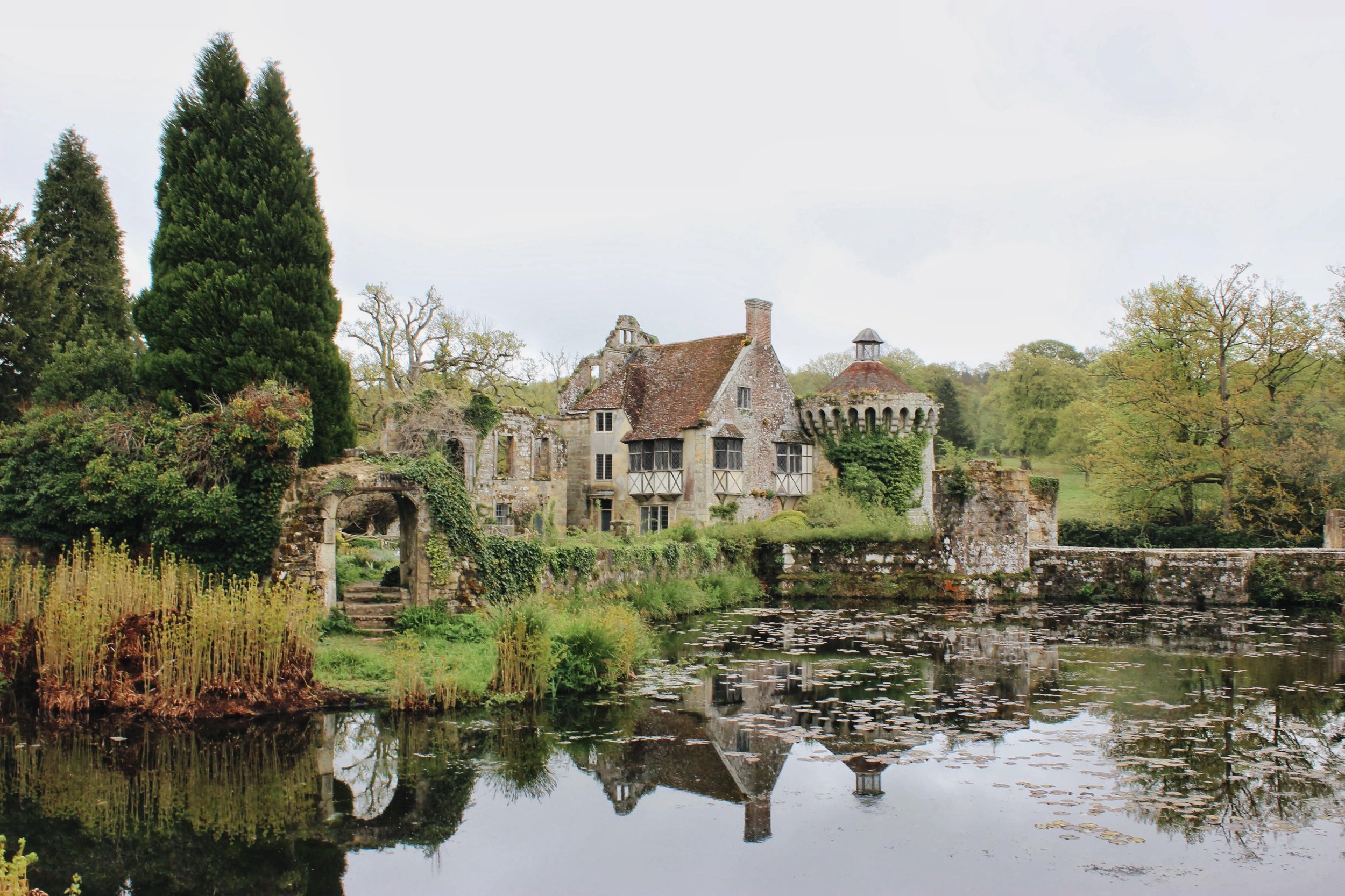

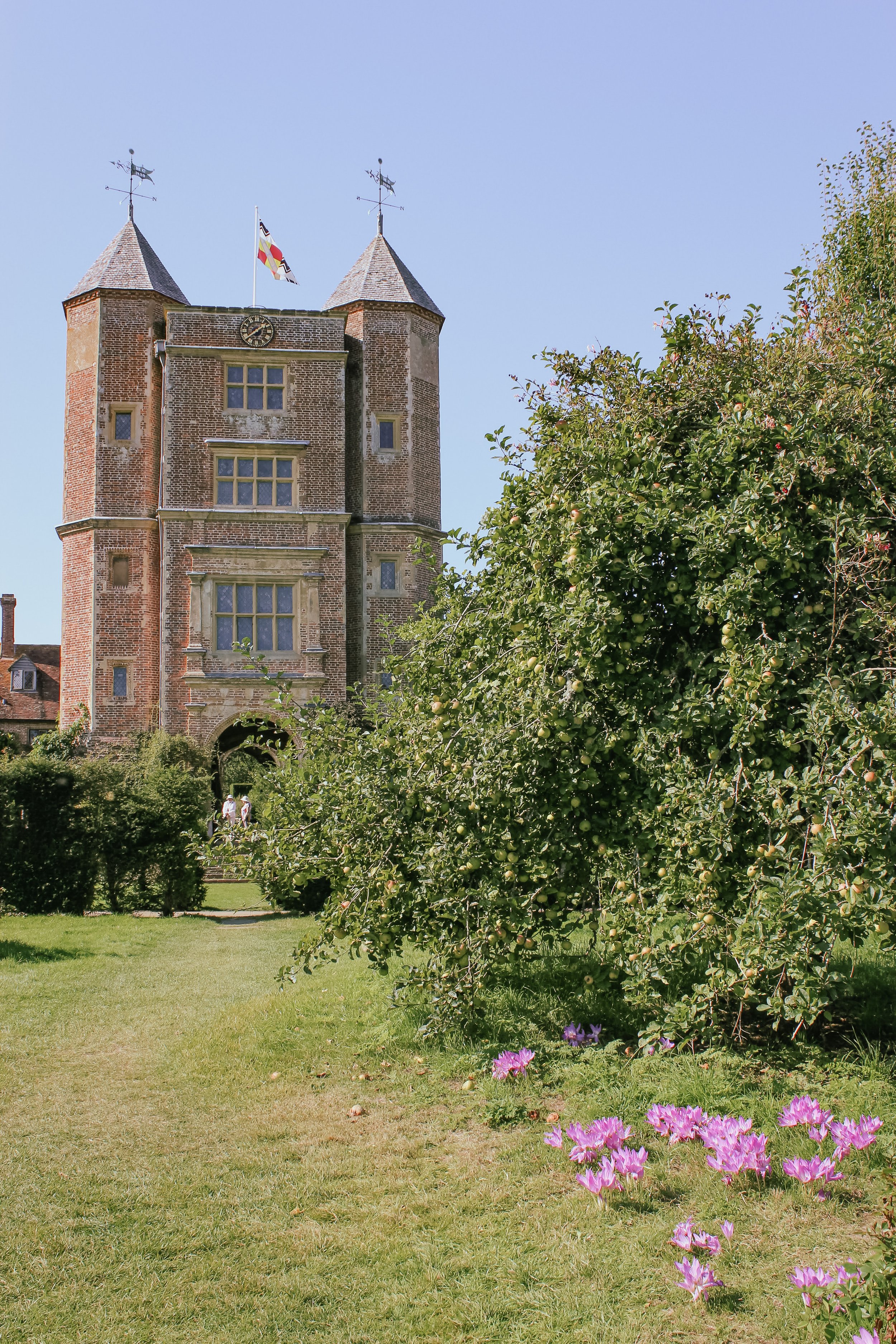
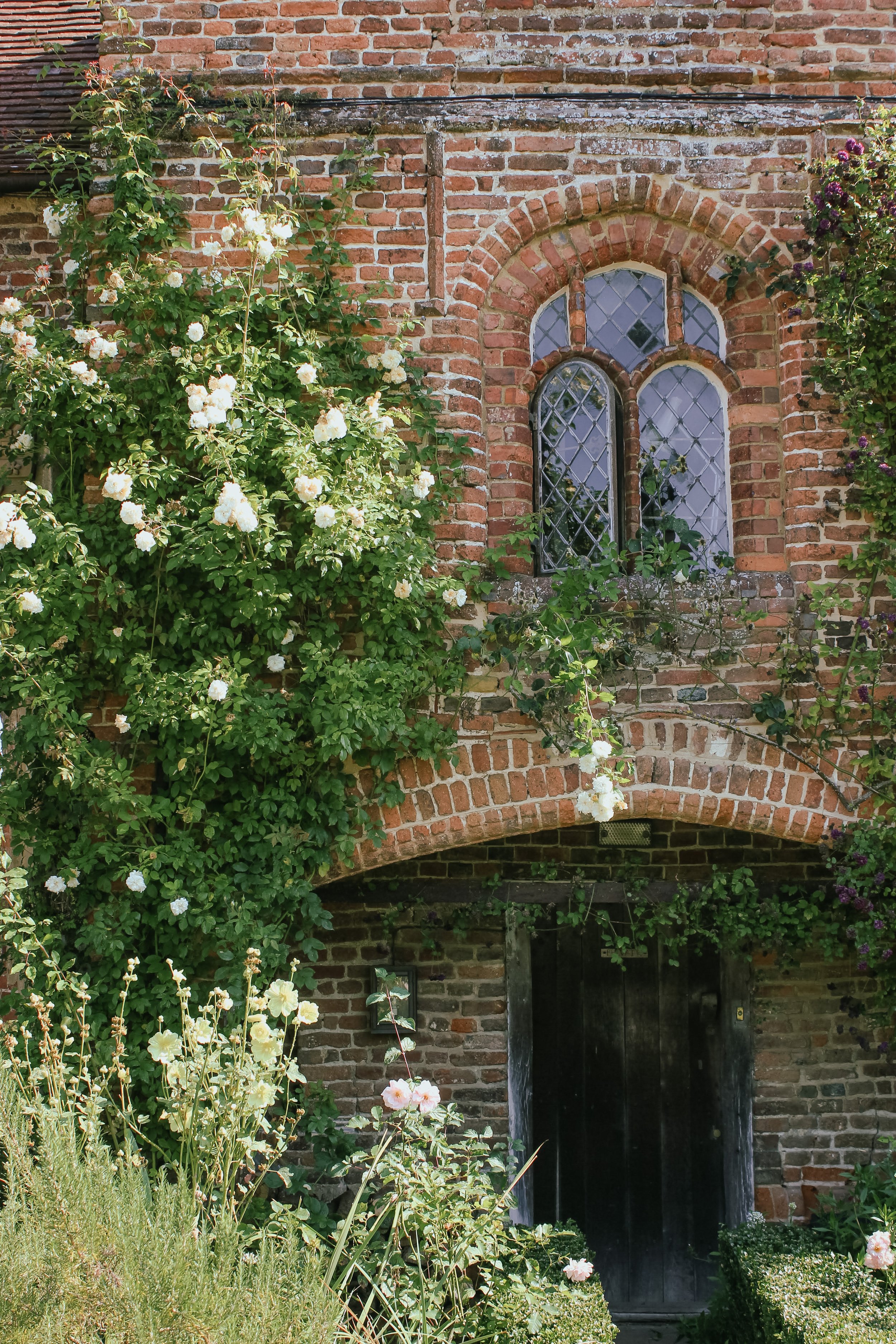
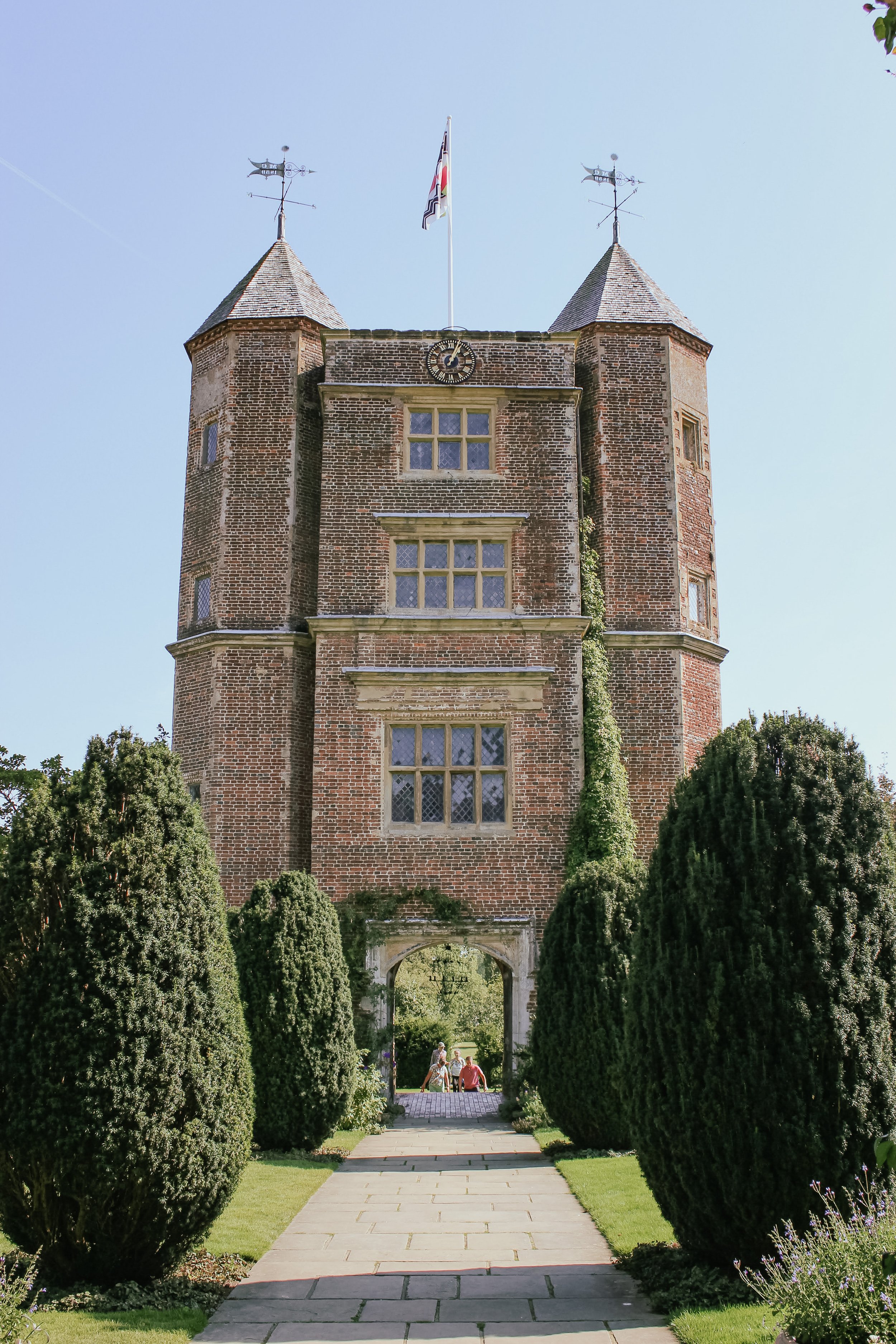
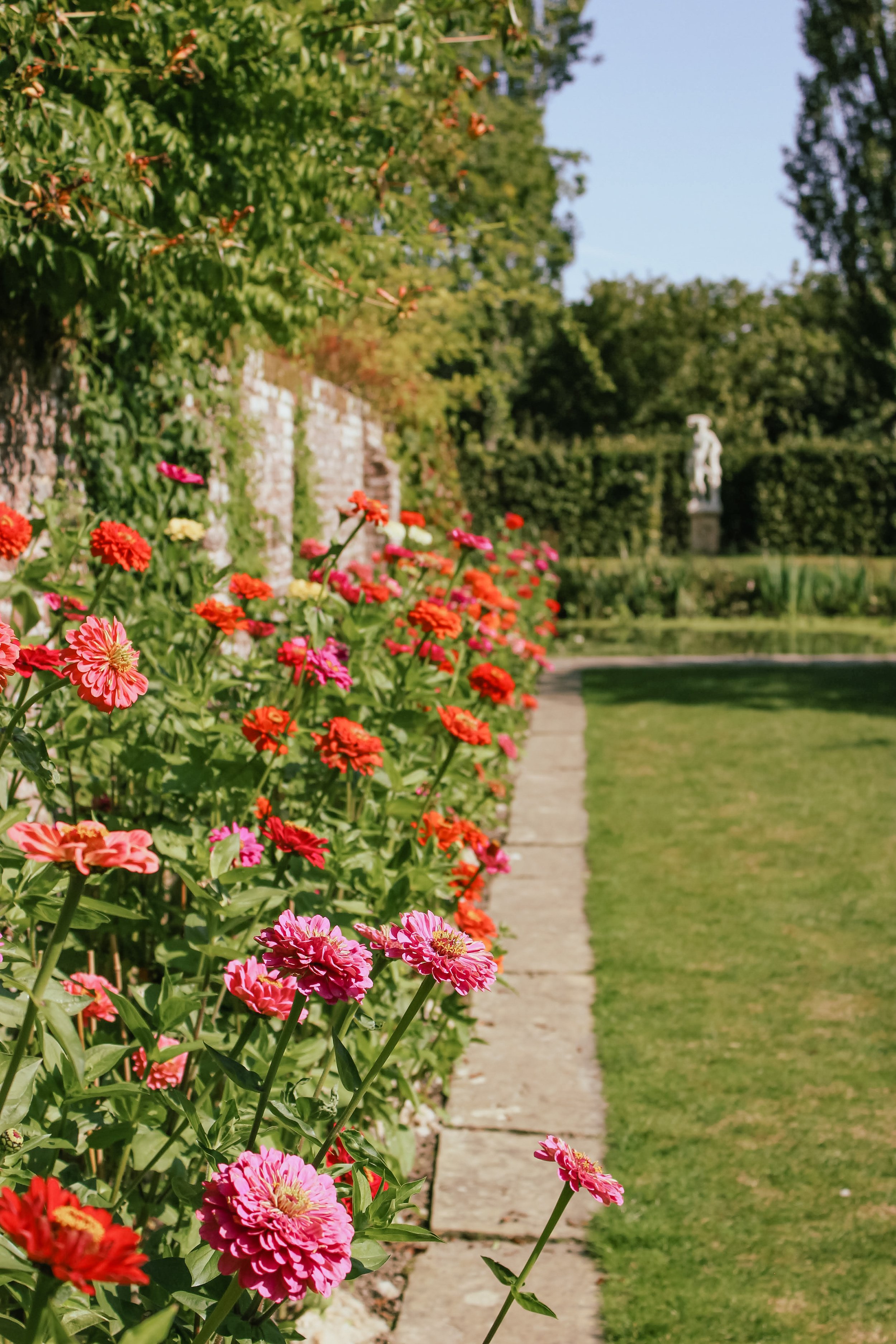

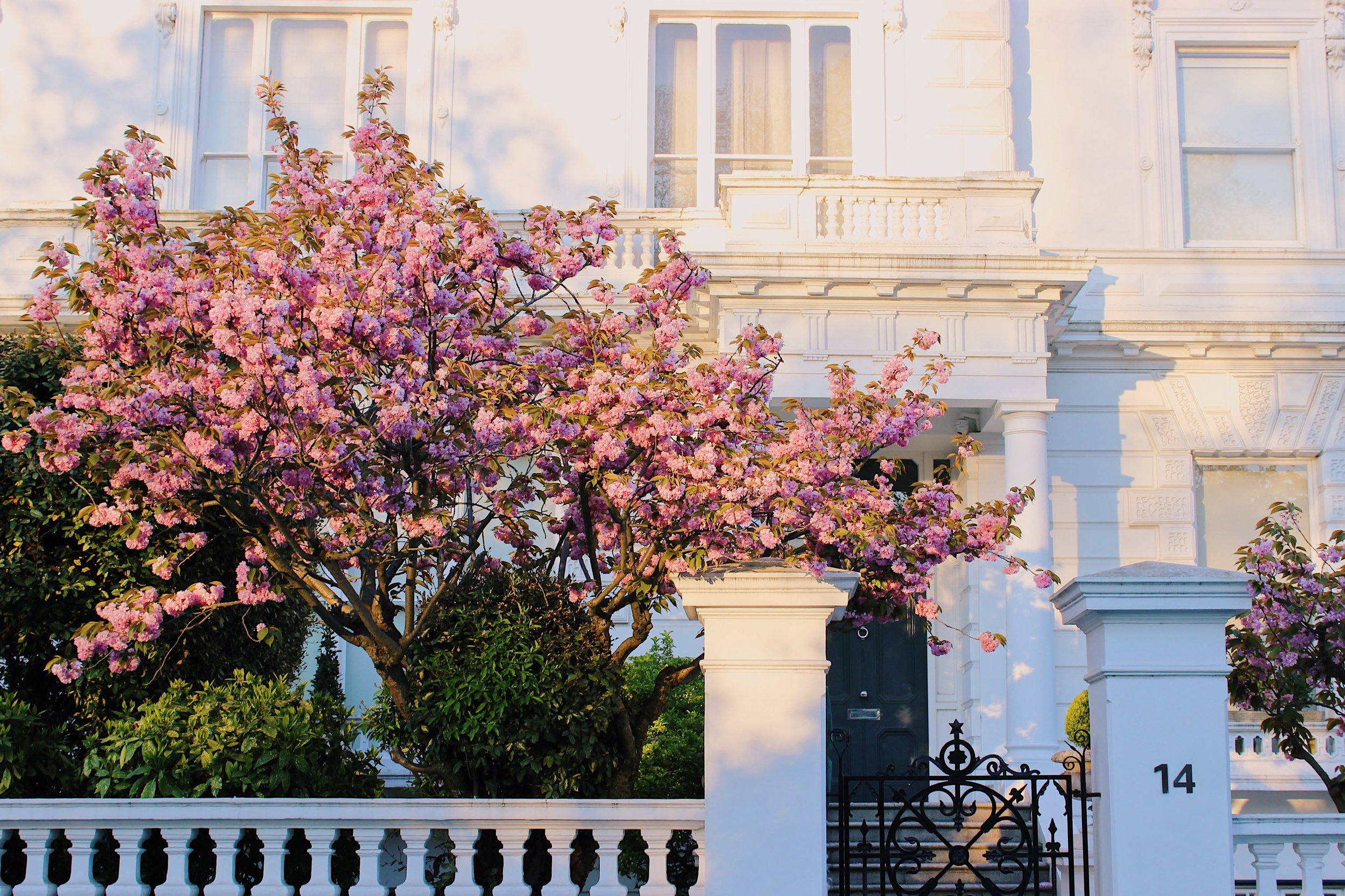
I never expected England to be such an ideal place for tulip gardens, but once I discovered the amazing displays (many of them even in free London parks) I realised that there is no need to go to the Netherlands for tulip season if you live in the UK. Whether you’re a local or visiting in April, this guide covers the best tulip gardens in London and nearby in South East England.